#Central Emergency Command Center
Explore tagged Tumblr posts
Text
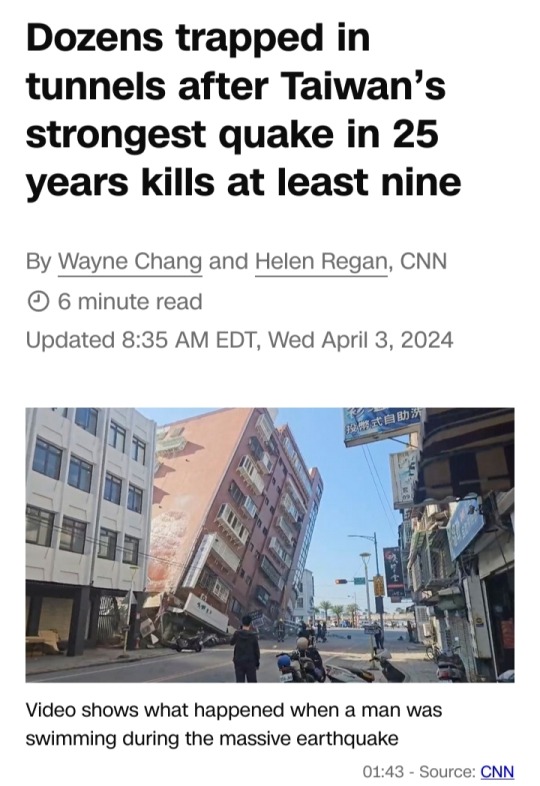
Taipei, Taiwan CNN — Rescuers in Taiwan scrambled to free dozens of people trapped in highway tunnels after the island was struck by its strongest earthquake in 25 years Wednesday, killing at least nine and injuring more than 900 others.
The powerful 7.4 magnitude tremor shook the island’s east coast, hitting at 7:58 a.m. local time, 18 kilometers (11 miles) south of Hualien city and at a depth of 34.8 kilometers (21 miles), according to the US Geological Survey.
It was followed by several strong aftershocks with tremors felt across the island, including by CNN staff in the capital Taipei.
Taiwan’s National Fire Agency (NFA) said in an update on Wednesday that the death toll had risen to nine, while 934 people have been injured.
The NFA did not indicate the severity of the injuries.
Meanwhile, 75 people stranded in various tunnels in Hualien County have been rescued by emergency responders.
As of 7 a.m. Eastern Time, 137 people remain trapped.
Among those trapped were 50 employees of the Silk’s Place Hotel Taroko, who were traveling in four minibuses.
Authorities have been unable to reach them by phone and have listed them as trapped for the time being.
Two German citizens that were caught up earlier in a tunnel in Hualien County have been rescued, the NFA added.
All the deaths were in Hualien County, among them three hikers killed by falling rocks in the tourist hotspot Taroko Gorge, the NFA said.
Falling rocks also killed a truck driver in front of a tunnel on the east coast’s Suhua Highway, it added.
Reports of extensive damage have also emerged, with collapsed buildings in Hualien County, thousands of homes left without power and a major highway closed due to landslides and rockfalls, according to Taiwanese officials.

Most of those trapped are in two road tunnels in northern Hualien County, the NFA said.
Two German nationals are stranded in a third tunnel in the county, it said.
The 400-meter Jinwen Tunnel, where 60 people are trapped, is one of more than a dozen that thread the Suhua Highway, a scenic but treacherous and narrow road that runs for 118 kilometers (73 miles) along the east coast.
Meanwhile, rescuers were en route to 12 people, including two Canadians, stuck on a trail in Taroko Gorge.
Taiwan’s Central Weather Administration spokesperson warned that powerful aftershocks as high as magnitude 7 are expected to occur until the end of the week.
“There was really strong shaking… We quickly turned off the gas and electricity and opened the door. It was really strong. It felt like the house would fall down,” Taipei resident Chang Yu-lin said on CNN affiliate Taiwan Plus.
Chen Nien-tzu, also in Taipei, said, “It was really wild.”
“It’s been a long time since we’ve had an earthquake so it felt really scary,” she said on Taiwan Plus.
The quake prompted initial tsunami warnings in Taiwan, southern Japan and the Philippines, with waves less than half a meter observed along some coasts and prompting airlines to suspend flights. All tsunami warnings were later lifted.
In Taiwan, military personnel were dispatched to help with disaster relief and schools and workplaces suspended operations as aftershocks hit the island, according to the Defense Ministry.
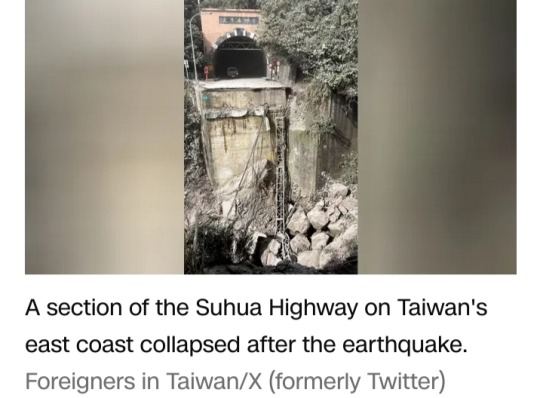
Taiwan’s outgoing President Tsai Ing-wen said Wednesday she had ordered her administration to “immediately” get “on top of the situation and understand local impacts as soon as possible.”
Tsai also told the administration to “provide necessary assistance and work together with local governments to minimize the impact of the disaster.”
Taiwan, a self-ruled island east of mainland China, is home to about 23 million people, most of whom live in the industrialized cities of its west coast, including the capital.
The island is regularly rocked by earthquakes due to its location on the Pacific Ring of Fire, which runs around the edge of the Pacific Ocean and causes massive seismic and volcanic activity from Indonesia to Chile.
Wednesday’s quake is the strongest to hit Taiwan since 1999, according to the Central Weather Administration.
That year, a 7.7 magnitude quake hit south of Taipei, killing 2,400 people and injuring 10,000 others.
Hualien County, parts of which are mountainous and remote, is home to about 300,000 people on the island’s sparsely populated east coast.
A magnitude 6.2 quake hit near the area in 2018, killing at least 17 people and injuring more than 300 others.

Collapsed buildings, highway damaged
The full extent of the damage is still being assessed, with road and rail closures curtailing access to the quake’s epicenter in Hualien County.
More than 100 buildings were damaged across the island, the National Fire Agency said, with about half of those in Hualien County.
Search and rescue operations were ongoing Wednesday afternoon at the nine-story Uranus Building that had partially collapsed, trapping residents, Hualien County Magistrate Hsu Chen-wei told reporters.
So far, 22 people had been rescued from the building, according to the NFA.
More than 91,000 households are without electricity, according to Taiwan’s Central Emergency Command Center.
The government-operated Taipower Company is working to restore power, it added.
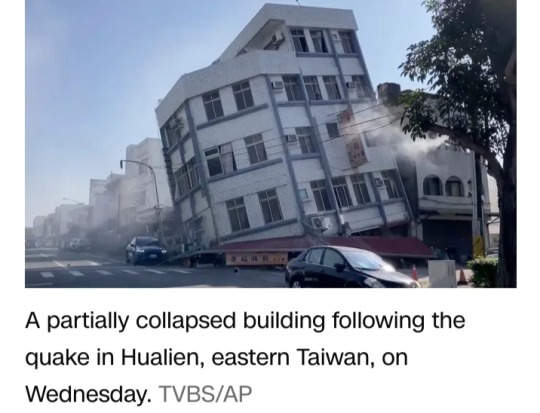
Footage posted on social media showed several collapsed buildings in Hualien and residents helping trapped people escape through the window of a damaged apartment complex.
The quake struck during the morning rush hour, with videos showing vehicles bouncing on a vigorously shaking highway, an overpass swaying in Taipei, and commuters struggling to stand inside a juddering Taipei metro train.
Meanwhile, video broadcast by CNN affiliate TVBS showed cellphone and security camera footage of the moment tremors struck homes and businesses across the island.
One clip showed power lines swaying violently above a street and another saw chandeliers shaking in a restaurant.
Large boulders could be seen strewn across the eastern Suhua Highway, with several tunnels broken — including one split in half, TVBS footage showed.

CNN affiliate SET News shows the front of a car smashed by fallen rocks.
Transport authorities recorded at least nine rockfalls and landslides on the highway, which has been closed to traffic.
Another highway connecting the west coast with eastern Taiwan was also damaged by falling rocks, with at least 12 cars hit and nine people injured, TVBS reported.
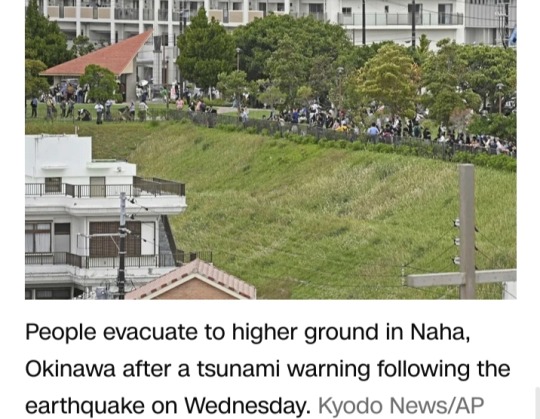
Tsunami waves
The quake sparked tsunami warnings across the region as authorities ordered evacuations.
In Taiwan’s Chenggong, about 100 kilometers (62 miles) south of the quake’s epicenter, waves reached almost half a meter.
The Central Weather Administration advised residents to evacuate to higher ground.
The Japan Meteorological Agency also issued a tsunami alert for the southern Miyakojima and Okinawa islands, warning of waves up to 3 meters (nearly 10 feet) high.
A 30-centimeter (nearly 1 foot) wave impacted Okinawa, the first tsunami observed there in 26 years, the agency said.
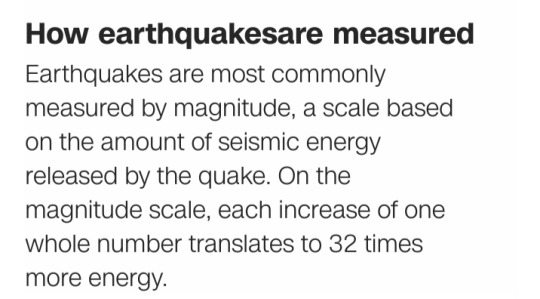
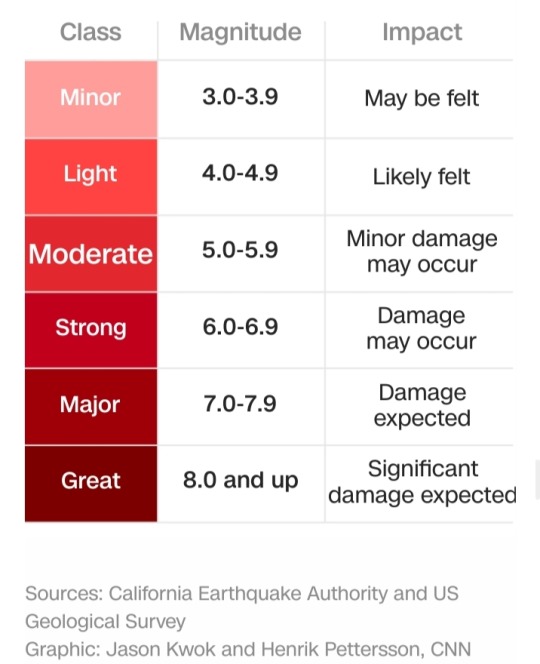
Several hours later, the US Tsunami Warning Center said the tsunami threat had “largely passed” but people in coastal areas should remain alert.
All flights from Okinawa and Kagoshima prefectures were suspended following the tsunami warnings in the area, Japan Airlines said.
Okinawa’s Naha airport resumed flights after the tsunami warning was downgraded to an advisory, airport spokesperson Hideaki Tsurudo told CNN.
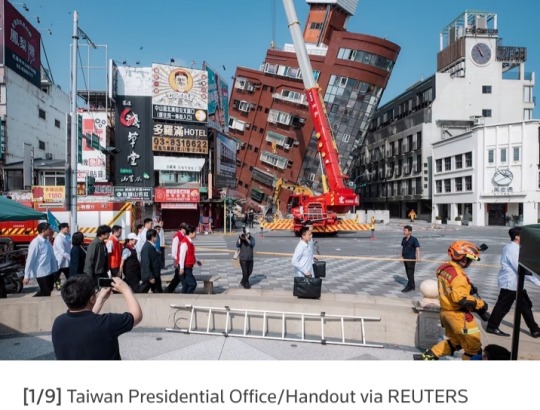
#Taiwan#Taiwan Earthquake#earthquake#magnitude 7.4#Hualien#tremors#aftershocks#National Fire Agency (NFA)#Jinwen Tunnel#Suhua Highway#Central Weather Administration#President Tsai Ing-wen#Pacific Ring of Fire#Pacific Ocean#Central Emergency Command Center#Taipower Company#tsunami warnings#tsunami#Japan Meteorological Agency#US Tsunami Warning Center
3 notes
·
View notes
Text
A Little Teaser......
This is my latest Series, Hope It's Enjoyable.

You awaken to a city carved into five kingdoms of blood and ice, each ruled by a queen whose beauty masks a blade. In the frozen sprawl of Northern Seoul’s Frosthaven, you once believed your heart was dead—until Winter’s blade found its way into your side and you answered Karina’s cold command.
You’ve seen Winter move like wrath incarnate, her loyalty forged in fire, and heard Ningning’s laughter echo through moonlit rooftops as you trained side by side. You’ve felt Giselle’s sharp gaze tracking your every step, reminding you that even allies carry their own agendas. But nothing prepared you for Karina’s velvet-gloved hand, pressing you into her world of whispered orders and frosted rose tattoos, where loyalty is both currency and curse.
Just when you think you’ve found a place—a sliver of belonging amid the carnage—the horizon burns with a new threat: the RED COVENANT. From Central Seoul’s ruined National Assembly, Yeji rises like a phoenix, her four horsemen—Ryujin, Lia, Chaeryeong, and Yuna—emerging from the shadows to reclaim territory with iron and flame.
Soon, Frosthaven’s ice will meet that fire. And at the heart of it all stands one name: Karina, queen of BLΛƆKWINTER, whose grip on your soul is as unyielding as the frost she commands. Will you remain her pawn, pounding flesh into ice for her empire? Or will you embrace the Red Covenant’s promise of rebirth and answer their call for revolution?
The line is drawn. The war has begun.
Seoul was once a beacon of light and culture—streets alive with neon glow, skyscrapers reaching for the sky, and communities bound by tradition. But when the central government collapsed under the weight of economic collapse and endless corruption, the city fragmented overnight. It wasn’t a gradual decay; it was a sudden, violent shattering. Factions sprang from the ashes of law and order, each claiming a slice of the metropolis for themselves. By the time the dust settled, Seoul had been carved into five jagged territories—Northern, Southern, Eastern, Western, and Central—each ruled by a gang queen whose power eclipsed any former mayor or general.
In the wastelands of Northern Seoul, BLΛƆKWINTER rose from the ruin of a collapsed corporate tower, carving an empire atop broken skyscrapers and abandoned data centers. Their leader, Karina, donned blade and frost-woven tattoos as both armor and warning. Where she walked, winter followed—intel networks delivered every rival’s secret, and her lieutenants—all members of her eponymous faction—enforced her rule with ice-cold precision. Across Southern Seoul, Crimson Lotus bloomed in the abandoned subways and burning neon clubs under Jennie’s command, rebelling against the old order with fire and blood. In Eastern Seoul, SUNKISSED VICE used illusions and propaganda to control hearts and minds under Soyeon’s cunning. The VENOM SAINTS in the west struck from the shadows, dressed in beauty but dripping with poison under Wonyoung’s reign.
Central Seoul was ground zero for the final collapse—a ruined National Assembly that became a throne for those who sought to unify what was lost. There, RED COVENANT emerged from the rubble, led by Yeji. With her four horsemen—Ryujin, Lia, Chaeryeong, and Yuna—she seized the old seat of power, promising a new order born not of ice or fire, but of pledges bound in blood and ash.
Now, Frosthaven’s icy walls stand on the edge of rupture. Karina, queen of BLΛƆKWINTER, rules Northern Seoul with frostfire and steel, her frosted phoenix tattoos marking every territory boundary she’s claimed. On the horizon, Yeji’s RED COVENANT advances, their banners—red and white—fluttering atop the smoldering remains of what once was. As the five territories hurtle toward war, your fate hinges on which queen’s promise you follow: the cold certainty of Karina’s rule, or the fiery rebirth offered by Yeji’s covenant. The city has been divided; soon, so will your loyalty.
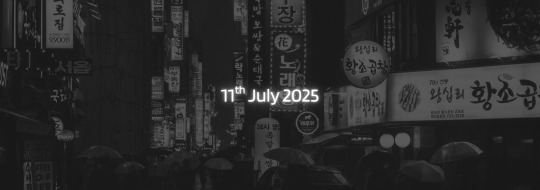
#kpop#kpop x reader#kpop x y/n#x male reader#beautiful#update#kpop smut#yandere#yandere stories#universe#kpop universe#universe au#au
75 notes
·
View notes
Text
Female Cult Leader Reader x Male Yandere

Summary: When a cult leader's most devoted follower turns obsession into violence, Y/N must confront the dark side of worship — and the power of a love that refuses to let go.
Trigger/Content Warnings: Yandere behavior / obsessive love, Psychological manipulation, Implied/referenced murder, Religious cult dynamics, Emotional coercion, Mental instability, Power imbalance in relationships, Implied captivity, Violence (non-graphic), Dark romantic themes.
Word count: 6,450
The sun dipped below the horizon, casting elongated shadows over the dense forest. The air was thick with humidity, and the distant hoot of an owl echoed through the trees. A solitary figure, Y/N, stood at the edge of a clearing, eyes scanning the encampment that lay ahead.
The compound was a collection of rustic cabins arranged in a semi-circle around a central bonfire pit. Beyond the cabins, a modest chapel stood, its wooden cross silhouetted against the twilight sky. The scent of burning incense wafted through the air, mingling with the earthy aroma of the forest.
Y/N took a deep breath, steeling herself for what lay ahead. As the newly appointed leader of the "Children of the New Dawn," she bore the weight of guiding lost souls toward enlightenment. The cult had been founded on principles of unity, spiritual awakening, and the rejection of modern societal constraints.
As Y/N approached the central gathering area, a group of followers emerged from the cabins, their faces alight with reverence.
"Welcome, Seeker," intoned Elias, a tall man with piercing blue eyes and a voice that commanded attention. "We have awaited your arrival."
Y/N nodded, acknowledging the greeting. "Thank you, Elias. It's time we begin our evening meditation."
The followers formed a circle around the bonfire pit, sitting cross-legged on the ground. Y/N took her place at the center, the flickering flames casting dancing shadows on her face.
"Close your eyes," Y/N instructed, their voice calm and soothing. "Breathe in the energy of the earth, and let go of your worldly burdens."
As the group settled into meditation, Y/N couldn't help but notice a young man seated at the edge of the circle. His eyes remained open, fixed intently on Y/N. His name was Adrian, a recent addition to the cult, and his gaze held an intensity that bordered on unsettling.
Nights in the compound were unnaturally silent.
Y/N often walked the grounds alone after the group meditations, reflecting on the day's teachings and the growing number of followers who had been trickling in from nearby towns. Word of the cult had spread faster than expected, and what had begun as a spiritual refuge was becoming something else entirely.
From the moment they arrived, Adrian had stood out. It wasn’t just the way he lingered near the periphery of every group. It wasn’t just the way his gaze never wavered when it met Y/N’s. It was something deeper — like a current running just beneath the surface. Controlled, quiet… and dangerous.
Y/N noticed it most during the meditations. While everyone else surrendered to the quiet rhythm of breath and chant, Adrian watched. He never closed his eyes. He studied Y/N like someone who had found a secret too sacred to look away from.
And lately, it was getting worse.
A week after the first encounter, Y/N called a private meeting with Elias in the chapel.
Elias was among the first converts — devoted, intelligent, and utterly loyal. Y/N had come to rely on his insight.
“He’s always watching,” Y/N said, voice low. “I can feel him behind me even when I know he’s not there.”
Elias nodded solemnly. “Adrian. I’ve noticed, too. He never sleeps when the others do. I caught him outside your cabin two nights ago.”
That stopped Y/N cold. “What was he doing?”
“Just… standing. Looking at your window. When I confronted him, he smiled and said he was ‘listening for the divine voice.’” Elias paused. “He believes you speak directly to something greater. That you are something greater.”
Y/N ran a hand through her hair. “He’s misinterpreting everything. I’m not a prophet. I never claimed to be.”
“But you let them believe,” Elias said softly.
The words stung. It was true — the teachings had become more abstract over time, and Y/N had allowed that ambiguity to grow. Now it was turning on her.
Y/N stood and paced. “Keep an eye on him. But don’t confront him directly. If we exile him, he might lash out. I don’t want a scene.”
Elias nodded. “I’ll be subtle.”
But Adrian was never far.
That night, Y/N sat alone in her cabin, writing. A soft knock at the door broke the silence.
She hesitated. It was past curfew — none of the followers should be out of their cabins.
“Who is it?” Y/N called, standing.
“It's me,” came Adrian’s voice, muffled but unmistakable. “Please. I... I just need a moment of your time.”
Y/N opened the door a crack.
Adrian stood in the shadows, hands clasped in front of him, like a sinner at confession. His dark eyes seemed even deeper in the moonlight, black pools that refused to let go.
“I shouldn’t be speaking with you right now,” Y/N said.
“I know. But I can’t sleep. Not without... your voice.”
Y/N frowned. “What do you mean?”
Adrian stepped closer, and Y/N noticed something in his hands — a small wooden carving. He held it out, reverently.
“I made this for you. I carved it from the trees near the chapel. It’s... it’s how I see you.”
Y/N took the object. It was a figure — not a god, not a saint. It was unmistakably her. The facial features, the long robes, even the posture during meditation.
“You made an idol,” Y/N said slowly, stunned. “Of me.”
Adrian’s smile was radiant — and entirely unhinged. “You are the vessel. The voice of the New Dawn. I see what others are too blind to understand.”
Y/N’s stomach turned. “Adrian… this isn’t what we teach.”
“You say that,” he said, tilting his head, “but when you speak, it’s like the universe leans in to listen. You shine when you close your eyes, Y/N. I see it. And I know... I know I was chosen to protect you.”
Y/N stepped back. “That’s not your role here.”
Adrian’s smile dropped.
“Then what am I to you?” he asked, almost whispering.
Y/N didn’t answer. She couldn’t.
“I see.” His voice was cold now, distant. “They’ve poisoned you. Elias… he makes you doubt your divinity.”
Y/N opened the door wider. “Go back to your cabin, Adrian. That’s an order.”
Adrian stared at her for a long moment, his jaw clenched. Then he turned and walked off into the dark.
The next morning, Elias was gone.
Vanished. No note. No witnesses.
Only his boots were found near the chapel, half-buried in mud and surrounded by strange, spiraling symbols etched into the ground.
The compound was on edge. Y/N tried to keep order, to hold the group together — but Adrian’s smile grew wider by the day.
As if he knew something they didn’t.
As if he was waiting for something.
Or someone.
Three days had passed since Elias vanished, and his absence clung to the compound like damp air before a storm.
Y/N had done her best to keep the routines intact — the meditations, the fasts, the communal chores — but unease was spreading like mold. Each morning brought new signs that something was terribly wrong.
Dead birds left at the altar.
Scratch marks on Y/N’s cabin door.
Spiral-shaped messages written in burnt charcoal into the dirt, always circling inward: You Are Chosen. You Belong to Us.
And Adrian... Adrian was never far.
Unlike the others, who whispered fears about Elias or wild animals in the forest, Adrian seemed strangely calm. Serene, even. Y/N noticed he’d begun spending more time with other followers — murmuring things during chores, leading hushed talks by the firepit, sharing “lessons” Y/N had never taught.
And then one night, after an unusually quiet meditation, Y/N saw Adrian slipping into the forest with three others — including Jonah, the shy eighteen-year-old recruit who had barely spoken since arriving.
Y/N followed them.
The woods were alive with nighttime sounds — insects, cracking branches, the whisper of movement through brush. Y/N moved like a shadow, dark robe blending into the trees.
In a secluded clearing, Adrian had already lit a small fire. The others knelt around it, eyes closed, hands on their thighs. Adrian stood before them, preaching.
“Y/N saved us,” he said, voice soft but firm. “She pulled us from the filth of the world. But she still don’t see her own divinity. She still believe she just... like us.”
One follower opened his eyes, uncertain. “Didn’t she say we’re all equals?”
Adrian smiled with gentle, terrifying patience.
“She say that. But I feel the truth when she speak. I see it — the glow behind her eyes when she meditate. You’ve seen it, too. Haven’t you?”
The others nodded slowly. Jonah hesitated, then nodded last.
Adrian knelt in front of him, pulling something from his cloak — a small ceremonial dagger, carved from stone. Meant for rituals of harvest or cutting herbs.
Not for this.
“Devotion requires sacrifice,” Adrian whispered. “Are you ready?”
Jonah bit his lip. “What kind of sacrifice?”
“Just a small cut. Your blood, offered as a vow.”
Jonah, mesmerized, reached for the blade.
Y/N stepped into the clearing.
“Adrian. Put it down.”
All three followers jumped. Adrian simply smiled.
“I knew you’d come,” he said, rising to his feet. “I knew you’d hear the truth calling.”
Y/N crossed the clearing and gently took the dagger from Jonah’s hand. The cut was shallow, but it was never about the blood.
It was about the symbol. The act.
“This is not what we teach,” Y/N said, firm. “This is not the way. We don’t ask for pain. Only clarity.”
Adrian tilted his head, eyes glittering with something that wasn’t madness, but something colder. Deeper.
“You say that… but you surround yourself with the sacred. You are our axis, Y/N. Why pretend otherwise?”
“Because faith must be free. Not forced.”
He stepped forward, so close now that Y/N could feel the warmth of the fire reflected in his breath.
“Then look me in the eye,” Adrian said. “Tell me you don’t feel it. That you don’t see in me what I see in you.”
Y/N said nothing for a moment.
The truth was… there was something there. Not affection. Not spiritual connection. Something more primal. Mirror-like. A sharp edge.
“No,” Y/N said at last. “What I see is a man twisting belief into obsession.”
Adrian smiled — a soft, broken thing. A smile of disappointment and hunger.
“Then if I can’t have you through devotion…” he whispered, “...maybe I’ll take you through fear.”
Suddenly, he pulled a smoldering coal from the fire and tossed it in. Smoke billowed upward, thick and choking. Y/N coughed, grabbing Jonah’s arm to pull him back — but when the smoke cleared...
Adrian was gone.
By morning, three cabins stood empty.
Adrian’s. Jonah’s. And the two others who had followed him.
But they left something behind.
Inside each cabin, carved into the walls, were spirals. Hundreds of them. Scratched deep into wood.
And above each bed, written in blood:
THE OFFERING HAS BEGUN
Y/N stood in the middle of the temple, hands clasped behind their back, eyes on the flickering candlelight. Followers whispered in corners. Some had begun to fast more than they should. Others sat in stillness for hours, staring into fire, waiting for signs.
Adrian had vanished into the woods. But his influence hadn't.
Every night, more of his spirals appeared.
One was carved into the floor of Y/N’s cabin, though the doors had been locked.
Another burned into the back of the altar cloth — carefully, reverently.
And then Jonah’s bracelet was found, tangled in a tree branch near the forest’s edge, coated in dried blood.
Y/N knew what had to be done.
She packed lightly: a blade, a cloth, a canteen. She said nothing to the others.
But when she stepped into the woods, someone was already waiting.
It was Luca, a quiet follower who had once been one of Elias’s closest friends.
“I’m coming with you,” he said. “You shouldn’t go alone.”
Y/N hesitated. “This isn’t a journey meant for more than one.”
“I don’t care,” he said. “If he took Jonah, he could take more of us. I’m not letting him take you too.”
Y/N didn’t argue. She simply nodded.
And together, they followed the path of spirals carved into trees, painted on stones, drawn in dirt.
It took them until dusk to reach it — a clearing deep in the forgotten part of the forest, where even birds refused to sing.
There stood a structure, new but built in the old way: logs, twine, blood. A crude shrine of worship made by fevered hands.
At the center, bound by vines, was Jonah — pale, trembling, alive.
Luca rushed forward, but Y/N stopped him.
“Wait.”
From the shadows behind the shrine stepped Adrian.
His eyes glowed, wild and ecstatic.
“You came,” he breathed. “Just as it was foretold.”
“Let him go,” Y/N said coldly.
Adrian tilted his head.
“He offered himself. For you. For all of us.”
“He’s a boy, Adrian. He was scared. You manipulated him.”
“He believes. As I do.”
Y/N stepped closer. “You don’t believe in me. You believe in owning me.”
Something flickered behind Adrian’s smile — rage, sadness, obsession.
“I’ve seen your visions,” he said. “The dreams you hide. I saw them in Elias before he disappeared. He doubted you. I took that doubt away.”
Luca’s breath caught.
“You— you killed him.”
Adrian didn’t deny it.
“I freed him. The way I’ll free Jonah. The way I’ll free you, Y/N.”
He pulled a blade — not stone, this time, but steel. Clean. Precise.
Y/N didn’t flinch.
“You think death will bring me closer to you?”
Adrian stepped forward, slowly, like approaching something sacred.
“No. Not death. Transformation.”
He reached out — but Luca moved faster.
In a blur of motion, he tackled Adrian to the ground. The blade clattered across the shrine floor.
Y/N didn’t waste a second.
She ran to Jonah, cutting the vines with their own knife, pulling the boy free as his body slumped into their arms, sobbing.
Behind them, Adrian and Luca struggled — the fanatic’s strength against raw fury.
It didn’t last long.
A crack echoed through the trees — and then silence.
Luca stood, breathing hard. Adrian lay still, blood trickling from a wound at his temple, unconscious.
Y/N stared at him, heart pounding.
He had nearly turned everything they’d built into a prison of worship and blood.
“Let’s end this,” Y/N said.
Together, they burned the shrine.
It took hours. Smoke billowed into the sky, thick and black. The spiral carvings hissed as they burned. Jonah sat curled against a tree, eyes wide, watching flames consume the place where his innocence had almost died.
Y/N stayed silent, staring into the fire, until the final beam cracked and fell.
Back at the compound, Adrian was locked away in an empty cabin, guarded constantly. Some followers wept. Some cheered. Most were confused.
Y/N gathered everyone that night.
They stood beneath the stars, no torches, no altar. Just silence.
“I failed you,” Y/N said. “Not because I doubted, but because I allowed faith to go unchecked. I allowed obsession to wear the face of belief. That will never happen again.”
No one spoke.
Y/N looked at them — at their eyes, their hunger for meaning, for truth. And they knew the path forward would be slow, but possible.
Together, they could begin again.
Days passed. Adrian remained silent in his cabin, eyes hollow. Luca kept watch. Jonah began to smile again, little by little. And at night, Y/N sat outside, looking into the trees, listening to the silence.
One evening, Luca sat beside them.
“You saved us,” he said quietly.
Y/N shook their head. “I nearly destroyed us.”
“No,” he said. “He tried to destroy you. And we followed him. But in the end… we came back.”
Y/N looked at him — truly looked.
And saw loyalty without blindness. Care without worship.
“I’m glad you were there,” she said softly.
Luca smiled. “I always will be.”
For the first time in weeks, Y/N felt something close to peace.
The forest remained dark. The spirals might return. But now, they would face them together.
And devotion, if it returned, would never again demand blood.
99 notes
·
View notes
Text
A highly abbreviated history of ancient Israel and Judah as I understand it
Before 1500 BC, a Canaanite culture develops in situ, the result of thousands of years of overlapping waves of migration. The region is inhabited by a mix of highland pastoralists, lowland farmers, and city-dwellers. In the latter part of this period, urbanization intensifies and Canaan becomes more integrated into surrounding regions, especially Mesopotamia and Egypt. The region is fractured, though sometimes tribes and cities join together in confederacies for mutual defense. Egypt and Assyria both occupy Canaan or part of Canaan at different times.
The confederacy known as "Israel" emerges in the northern part of the hilly region west of the Jordan River. Its name references the Northwest Semitic high deity, El, but relatively early the deity Yahweh is introduced into the confederacy, probably by a group from the south who come to occupy a preeminent role in administering the Yahwistic cult. Yahweh is initially cast as a son of El. The Northwestern Semitic peoples often assigned patron deities to nations, and Yahweh is the patron of Israel, as Chemosh is to Moab. Yahweh has a storm-deity profile akin to Baal, elements of which will be retained when Yahweh is conflated with El.
As part of this merger, Yahweh will also acquire the role of consort of Asherah, who in Ugarit was paired with El.
The early Israelites combine heterogenous tribal traditions into a common historical and religious framework. Integral parts of these traditions include the covenant with Yahweh and an obligation to follow his commands, and a history of Yahweh freeing some or all of the ancestors of the Israelites from bondage in Egypt, guiding them through the wilderness, and leading them to their homeland in Canaan.
These traditions congeal during the pre-monarchic tribal period, from ca. 1200-1000 BCE. They do not include monotheism, the worship of Yahweh at a single temple, or the exclusive worship of Yahweh. In this period, the common bonds of religion and culture suffice to create a single Israelite identity; the component members of the Israelite confederation retain considerably autonomy, though they may act in concert with their fellows, particularly in times of invasion.
At some point around or after the 10th century BCE, separate monarchies emerge centered in various locations in the north (and eventually settling on the city of Samaria) and in Jerusalem in the south. Direct evidence for Saul, David, and Solomon is very weak, and the idea of a period of united monarchy covering Israel and Judah together is contentious. It seems highly likely that the story of the Davidic line is a Judean tradition retrojected onto an idealized period of political unity. Nonetheless, even the Bible has the United Monarchy ending by the late 10th century BCE.
In 720 BCE, the northern kingdom of Israel is destroyed by the Assyrians. About a fifth of its population is deported; a large part flees south to Judah, causing rapid expansion of Jerusalem. The refugee population includes northern Levites and landowners, who are influential in bringing northern religious traditions wiht them, and become part of Jerusalem's administrative elite.
In 640 BCE, King Amon is murdered as part of a coup attempt, suppressed with the aid of these northern notables; Amon's young son Josiah is installed as king. At this time, Judah is vassal to Assyria, but Assyria enters a period of sharp decline, which leads to resurgent nationalism in Judah. This inspires a new rescension of Israelite history and law led by the Deuteronomists (but rooted firmly in the canonical history of Moses), who foreground the exclusive worship of Yahweh, and produce a comprehensive history of Israel since Joshua.
In 622 BCE, Josiah launches a reform program that enforces the henotheistic or monolatrist worship of Yahweh, centralizes all cultic activity in the Jerusalem temple, and enshrines an early form of the Deuteronomistic law as the covenant between Judah and Yahweh, in which Yahweh symbolically replaces the Assyrian king. Asherah-worship is among the casualties of this new religious regime.
In 586 BCE, Judah is conquered by Babylon, and the temple is destroyed. Much of its elite population deported. This upheaval sparks a major period of cultural and religious transformation, especially among the deportees in Babylon, who struggle to understand theologically how they can worship the patron-sovereign god Yahweh from a foreign land. Among other theological developments, this leads to the invention of true monotheism: not only is Yahweh our only god, he is the only god, the god of all the world and not just Israel. The Deuteronomistic texts are revised again as a part of this process.
In 539 BCE, after a half-century of exile, Babylon is defeated by the rising Achaemenid empire, and a small portion of the Babylonian Jewish exiles return to Judah. There, they embark on a project to rebuild the temple, and reform the religion according to new theological understanding. Judah is now "Yehud Medinata," a province of the Persian empire; it flourishes for two centuries until the Greek conquest in 333 BCE.
The post-exilic period is hugely influential on the Jewish scriptures; rescensions in this period incorporate Babylonian influence (especially in the primeval histories), the ancient canonical histories (the patriarchal narratives and Exodus), the post-canonical histories as revised by the Deuteronomists, and many other sources.
After 333 BCE, Judah (Judea) is a frontier region between the Seleucids and Ptolemies; the country is ruled by a hereditary high priest, who is a vassal of Hellenistic rulers. Greek culture and philosophy is influential on the development of Second Temple Jewish thought and traditions. This phenomenon is known as "Hellenistic Judaism," and sprang up first in Alexandria and Antioch, before spreading to Judea. Major achievements of Hellenistic Judaism include the Septuagint, probably a result of there being large Jewish communities in cities like Alexandria that no longer spoke Hebrew or Aramaic.
In 167 BCE, sparked by the religious meddling of Seleucid ruler Antiochus IV Epiphanes, Judea rises up in the Maccabean Revolt. A new kingdom is established under the Hasmonean dynasty, after decades of fighting.
Around 110 BCE, John Hyrcanus, high priest and ruler of Judea, invades the transjordan region and Samaria, destroying Shechem and the Samaritan temple on Mount Gerizim. He also invades Idumea, and forces the Idumeans to convert to Judaism under threat of destruction. His son assumes the title of "king" for the first time, combining it with the office of high priest. Under the son, Aristobulus, Galilee is conquered and annexed, and there is an influx of Jewish settlement in the region.
At its peak, the Hasmonean kingdom is almost as large as the semi-mythical United Monarchy; but in 67 BCE, weakened by a civil war, it is conquered by the Romans. The Holy of Holies in the temple is desecrated, and the ruler, Hyrcanus II, is reduced to the status of "ethnarch," a vassal of the Roman Republic.
Some regions conquered by the Hasmoneans are gradually removed from their rule by the Romans; Roman civil wars and struggles with the Parthians often spill over into this client sate; ultimately, when a Parthian-backed pretender is expelled in 37 BCE, Marc Antony and Augustus appoint Herod the Great as king of Judea. The Herodian kingdom expands further north, and northeast over the Jordan. After Herod the Great's death, the country is divided into four parts; Judea proper, Idumea, and Samaria go to Herod Archelaus, who is deposed in 6 BCE; his territory becomes a Roman province.
About this time, Jesus, the son of Joseph, is born in Nazareth, along with his siblings, including James, in the Galilee region ruled by Herod Antipas.
Around 30 CE, Jesus gathers a small band of followers around him; he visits the mystic John the Baptist, and receives baptism from him; he preaches a radical doctrine that includes the imminent coming of the Kingdom of God, and claims a mantle of divine authority in a way highly legible to (and highly controversial within) post-Hellenistic Jewish philosophy, though he does not claim to be God. Eventually he travels to Jerusalem to observe the Passover, where in a notable incident he attacks merchants and moneylenders in the Jewish temple. For various reasons, probably having to due with his radical philosophy and his disturbance of the public peace, he is executed on the orders of the Roman prefect of Judea. A small community of his followers remain, especially in Jerusalem, where they are led by his brother James, and some continue to seek converts to his cause.
In 66 CE, the First Roman-Jewish War occurs. A revolt breaks out, sparked by nationalism, bad governance, and religious tensions. Jerusalem is besieged, and in 70 CE the Temple is destroyed and the city is razed. The last holdouts commit mass suicide at Masada in 73 CE.
Resentment against Roman rule is only intensified; in 129 CE, Hadrian establishes the pagan city of Aelia Capitolina on the ruins of Jerusalem, inciting further Jewish anger. In 132, Simon bar Kokhba leads another rebellion, taking the title Prince of Judea and establishing his own government. Some of his contemporaries think he might be the long-awaited Messiah, but despite initial successes, the rebellion fails. Bar Kokhba is killed in 135, in the last holdout at Betar. The rebels who remain are killed or enslaved; severe Roman repression results in widespread slaughter and enslavement, and the razing of hundreds of towns and villages. According to Cassius Dio, "nearly the whole of Judea" is laid waste. The Jewish presence in Judea is reduced significantly, and the center of gravity for Jewish culture in the southwestern Levant shifts north, to Galilee. Small Jewish communities persist on the edges of Judea and on the coastal plain, suffering religious persecution under Hadrian (and just about every ruler to come thereafter). Even the name "Judea" is abolished, with the area now called "Syria Palaestina."
As under the Babylonian exile, in the post-Second Temple period the Jewish religion undergoes another period of transformation, struggling to deal with its new circumstances. The traditions of the Second Temple period, as practiced by the Pharisees, are written down in the Mishnah to preserve them; they are first redacted by Judah ha-Nasi, probably in Beit Shearim or Sepphoris, some time between 100 and 200 CE. Rabbis (village judges) study the work produced by Judah ha-Nasi extensively. Their discussions are documented in a series of books that come to be known as the Gemara. Scholars in Tiberias and Caesarea (in Galilee and on the Mediterranean coast respectively) compile one form of the Gemara ca. 400 CE, while scholars of the Jewish community in southern Mesopotamia (then still known as Babylonia) compile another, ca. 500 CE. These compilations of Mishnah and Gemara are known as the "Talmud," of which the Babylonian Talmud proves the more influential.
143 notes
·
View notes
Text
Chicago, Illinois is often considered to be on the periphery of the plantation. William Cronon's famous narrative of Chicago's relationships with the "Great West" positions the burgeoning city at the edge of American expansion into plantation agriculture in the Midwest and industrial farming on a national scale. [...] [W]e could also characterize the city as an anticipatory hub between the twin plantation figures of the pre-war American South and America's 20th century colonies [in Central America, the Philippines, and beyond]. During the Reconstruction years, Chicago emerged as a logistical center, channeling America's railroads and telegraph lines into itself. As parts of this communications node, Chicago newspapers and military police served to convert white anxieties about Black migration from the plantation South into new techniques and technologies of prediction that became transportable across a newly imaginable informational plane of US imperialism. [...] [I]n Chicago between 1875 and 1890, [...] white anticipations of African American migration from plantations in the South were translated into new information sciences and policing techniques that made their way to plantations in places like the Philippines. [...]
[S]uch feelings were fundamental to linking plantations which at first seem so spatially and temporally distant. [...]
---
On May 3, 1879 the Chicago Tribune published a greatly anticipated investigatory series entitled, “The Negro Exodus: Causes of the Migration from the Negro’s Point of View” [...] the latest in a long sequence of deeply uneasy reports dating from 1860. From its location at the communicative center of all major US rail and telegraph lines, the Chicago Tribune undertook an imagined responsibility to inform its Midwestern audience of Black peoples’ movements and behaviors. [...] At the climax of the “Negro’s Point of View” series, [...] May 3, the Chicago Tribune presented its showstopping report from its correspondent in Vicksburg, Mississippi entitled “Letters Written by Negroes in Kansas to their Friends South”. In this report, the writer discusses his skepticism of earlier methods of [...] interviews with Black migrants. [...] [The newspaper] conducted its fact-gathering through the mass surveillance of Black peoples' letters [...] [to assess] inner motivations [...] about Black peoples’ “perceptions, enjoyments, and reasons” [...]. Such informational appetites became the anticipatory basis for 20th century enumerative practices. As Colin Koopman argues, informational fastening, or the atomization and separation of facts from Black peoples’ bodies, became commonplace during the Great Migration in the practice of racial statistics, criminology, and health policy directed at Black migrants [...].
---
White Chicagoans’ prolonged concern over predicting Black behaviors and intentions materialized in 1877, when the city became a central hub of militarized response to a nation-wide railroad strike. Adjutant General Richard C. Drum, who commanded the Military Division of the Missouri (Western Frontier) in Chicago from 1873 to 1878, took control of Chicago’s military response to the Great Railroad Strike of 1877. In 1879, after his final year in the city, Drum moved to Washington, DC and proposed the establishment of the Military Information Division (MID) [...]. The MID, which formally established in 1885, maintained close ties to Chicago's local information collection system, adopting a Bertillon identification system of collecting and storing intelligence cards at the time that the National Association of Chiefs of Police established their central bureau of identification in Chicago in 1896 [...]. By the tun of the 20th century, Chicago's police force had expanded tenfold [...], and Drum's MID had amassed over 300,000 intelligence cards [...].
---
The affective atmosphere into which the MID intensified its own predictive techniques later traversed the Pacific Ocean into the Philippines. Alfred McCoy argues that the American introduction of communication technologies and surveillance techniques in governing the Philippines constituted the United States’ first information revolution (McCoy 2009: 18). Colonial police trained in the anxious habits of the MID, rendered the Philippines a laboratory for securitized speculation. McCoy further contends that these informational “capillaries of empire” embedded themselves into the Philippines’ plantocratic-security state as well as US domestic surveillance practices. I add to McCoy’s argument by suggesting that trained feelings of white apprehension translated into imperial mechanisms for governing the Philippines through systems of intelligence cards, telecommunications infrastructure, policing units, and management sciences. Reminiscent of the psychological investigatory projects that saturated Chicago’s public life, the MID and its successors developed techniques for psychological examination and personality typing led by another Chicagoan, Harry Hill Bandholtz. [...] Bandholtz sharpened the MID's informational sciences by training Philippines police forces in the neurotic art of collecting every imaginable fact about Filipino behaviors [...].
---
Ultimately, the US colonial plantocracy in the Philippines built its authority around information infrastructures which had been trained on apprehensive practices and feelings emanating from Chicago’s racialized geography. [...] [T]he informational networks that extended from the image of the American South, through the anticipation of Chicago's public, [...] animated the governance of colonial plantations in the Philippines [...].
---
All text above by: Jolen Martinez. "Plantation Anticipation: Apprehension in Chicago from Reconstruction America to the Plantocratic Philippines" (2024). An essay from an Intervention Symposium titled Plantation Methodologies: Questioning Scale, Space, and Subjecthood. The symposium was introduced and edited by Alyssa Paredes, Sophie Chao, and Andrés León Araya. The symposium was hosted and published by Antipode Online, part of Antipode: A Radical Journal of Geography. Published online 4 January 2024, at: antipodeonline.org/2024/01/04/plantation-methodologies/ [In this post, bold emphasis and some paragraph breaks/contractions added by me. Presented here for commentary, teaching, criticism purposes.]
#tidalectics#multispecies#abolition#incredible cant take this any more#like a big inescapable spiderweb#ecology#ongoing chicago discussion#ecologies
204 notes
·
View notes
Text
"If we treat the Stonewall Uprising as initiating the modern gay mass movement in 1969, the left-adventurist line was initially dominant, and fell by the wayside in the late 70s. Those who led the first wave of the LGBT movement of the 60s understood themselves (however incompletely) as participating in a revolutionary movement and process: In broad strokes, the early “left” line groups of gay liberation located the center of gay oppression in the family form itself and were explicitly in solidarity with the women’s movement as in many ways the same as their own (ideologically if not always practically). The British Gay Liberation Front’s Manifesto reads
The oppression of gay people starts in the most basic unit of society, the family...At some point nearly all gay people have found it difficult to cope with having the restricting images of man or woman pushed on them by their parents...we are expected to prove ourselves socially to our parents as members of the right sex (to bring home a boy/girl friend) and to start being a 'real' (oppressive) young man or a 'real' (oppressed) young woman
The Boston Gay Men’s Liberation group argued in their manifesto for the collectivization of childcare and housework, saying
Rearing children should be the common responsibility of the whole community. Any legal rights parents have over ‘their’ children should be dissolved and each child should be free to choose its own destiny. Free twenty-four hour child care centers should be established where faggots and lesbians can share the responsibility of child rearing
Others explicitly aligned themselves with the national liberation and anti-imperialist struggles of the time –Third World Gay Revolution went so far as to explicitly call for armed struggle towards establishing socialism. The gay struggle, to these organizations, was necessarily part of the struggle for the end of capitalism and the liberation of all oppressed and exploited peoples.
Nevertheless, these groups primarily took the left-adventurist line, and the failure of these organizations to place politics in command and take up Marxism fully (despite its influence within the movement), and the failure of the leading Marxist organizations of the time to cast aside their chauvinism, place politics in command, and embrace the LGBT movement (most notably RU/RCP, which maintained that homosexuality was “perpetuated and fostered by the decay of capitalism” and to be eliminated under socialism until 2001 and engaged in conversion therapy-style practices on their gay cadre), allowed the bourgeoisie to co-opt the movement and suppress its revolutionary strains. By the end of the 1970s the main left-adventurist groups that emerged from the movement's popular initiation via the Stonewall Uprising (GLF, STAR, TWGR, etc) had collapsed, and were replaced by the newly dominant right-opportunist trend, represented in groups like Lambda Legal (founded 1971), GLAD (1978), and the Human Rights Campaign (1980). Occasional left-adventurist ruptures emerged over the succeeding years, with ACT UP's break (rooted in part in gay and lesbian anti-imperialist solidarity work in the preceding years) from Gay Men's Health Crisis representing the most significant of these, but over the next three decades the bourgeois "marriage equality" became the central demand of the movement, with the implication that once these various reforms proposed by the right-opportunist trend were enacted, the gay movement would cease to be necessary.
In the first two decades of the 21st century these reforms were realized, and the idealist fantasies of the leading bourgeois gay organizations were not. These reforms were granted because they reaffirmed the bourgeois family form, successfully assimilating the leading upper strata of LGBT people as a method of defusing the movement as a whole. While in some ways the broad social acceptability of homosexuality, transness and gender nonconformity have increased, the reaction to these reforms has produced a vicious effort to oppress the lower strata, typically trans people.
Indeed, all empirical evidence points to the continuing existence of anti-gay and anti-trans oppression. In our younger years, parents, teachers, and other authority figures will attempt to suppress any expression of homosexuality, transness, or gender non-conformity. The passive and active social enforcement of your sex/gender role is a universal experience, but is felt particularly acutely by those most directly in contradiction with those roles. When this fails, authority figures sometimes resort to violence and sexual abuse – gay and trans children suffer higher rates of psychological, physical, and sexual abuse across the board as compared to their cis and straight peers. LGBT people as a whole make 10% less than the average worker. This is felt more acutely among trans people, particularly trans women (in line with their cis counterparts), who make just 60% of the average. What bourgeois sociological evidence does exist points to significant discrimination in housing, jobs, medical care, etc. Accessing medical care is a struggle of its own for trans people – getting the treatment needed for basic day-to-day existence is often humiliating and expensive.
For younger LGBT people, particularly trans people, this political sequence has produced significant "whiplash." We grew up in a period of a real increase in broad social "acceptance," and being told that these reforms would guarantee an end to our oppression. But the utter abdication of leadership by the rightists following the reforms (after all, "we won") and the reactionary backlash has left the movement with a vacuum of political and organizational leadership at a crucial conjuncture. In the absence of this leadership, small groups have begun to emerge, largely taking up the left-adventurist anarchist line, sometimes explicitly. In some ways, this is a positive situation for communists. The broad masses of LGBT people are crying out for leadership in their struggle against the reactionary offensive, and the failure of the bourgeois rightist line to provide its promised victory has revealed to many gay and trans people, particularly those of the lower strata, the bankruptcy of reformism.
The current assault on our self-determination by the reactionary wing of first-world politics presents us with an opportunity to smash that trend, to effect a final rupture. Gay and trans people, particularly trans people, are increasingly forced into direct confrontation with the bourgeois state (through its repressive laws) and its extra-legal shock troops (with trans events becoming one of the primary targets for street fascist attacks). Not since the AIDS crisis have we seen such direct confrontation – and with it, openness to revolutionary communist political projects.
The task before communists in the gay movement is therefore to rectify the line of the movement through theoretical and practical struggle, to offer leadership to the gay and trans masses, and transform this movement into a detachment of the world proletarian struggle for communism."
Half the Sky: Preliminary Materials for a Proletarian Feminist Politics
153 notes
·
View notes
Text

Tommy Kinard centered concept for the 9-1-1 Spin-Off (just me having fun)
Seeing Lou in the comedy show with a look similar to 9-1-1 season 2 Tommy sent my muse into a frenzy. Simultaneously, there was this spin-off, so I sat down and wondered, what would I do?
Title: "9-1-1: Golden Gate"
Genre: Drama
Logline: After a heartbreaking breakup, firefighter and pilot Tommy relocates to San Francisco, where he joins the SFFD. As he navigates new challenges and forms new bonds, he must confront his past and deal with personal and professional struggles.
Synopsis: Tommy, a seasoned firefighter and pilot, moves to San Francisco after a painful breakup with his partner, Buck. His impressive reputation quickly earns him a position with the San Francisco Fire Department (SFFD). As Tommy adjusts to his new life, he forms new friendships and faces the challenges of a new city and team.
Key Plot Points:
New Beginnings: Tommy's arrival in San Francisco and his first days at the SFFD. He meets his new colleagues and starts to build relationships, though not without encountering some resistance.
Flashbacks: Interspersed throughout the series, flashbacks reveal Tommy's past. We see his early days under Gerrard's command at the 118, his transfer to Harbor Station, and his coming out. These scenes provide context for his current struggles and triumphs.
Critical Emergency: A major emergency results in the tragic loss of one of Tommy's new teammates. This event deeply affects Tommy, leading to a struggle with guilt and grief.
Family Struggles: Tommy's father is suffering from dementia, adding another layer of stress to his life. Flashbacks show the strained relationship between Tommy and his father, complicated by the early death of Tommy's mother.
Heartbreak: Tommy is still reeling from his breakup with Buck. He finds it difficult to move on, and every new man he meets is compared to Buck. This ongoing internal conflict adds depth to his character.
Workplace Challenges: Tommy faces homophobic tendencies from some colleagues, making his integration into the team even more challenging. Despite these obstacles, he remains determined to find his place and peace in this new chapter of his life.
Characters:
Tommy: The protagonist, a skilled firefighter and pilot, dealing with personal and professional challenges.
Buck: Tommy's ex-partner, whose memory haunts Tommy.
Gerrard: Tommy's former commander at the 118, featured in flashbacks.
Tommy's Father: Suffering from dementia, their complicated relationship is explored through flashbacks.
New Teammates: A diverse group of firefighters at the SFFD, some of whom become friends while others present challenges.
Themes:
Resilience: Tommy's journey is one of resilience, as he faces and overcomes numerous challenges.
Identity: The show explores Tommy's identity as a firefighter, a son, and a gay man.
Grief and Healing: The series delves into Tommy's grief over his teammate's death and his breakup, and his path to healing.
Family Dynamics: The complicated relationship between Tommy and his father is a central theme.
Tone: The show balances intense drama with moments of hope and camaraderie, providing a realistic yet uplifting portrayal of Tommy's journey.
#911 speculation#911 spin off#tommy kinard#evan buckley#bucktommy#911 abc#tevan#lou ferrigno jr#sffd#911 on abc
41 notes
·
View notes
Text
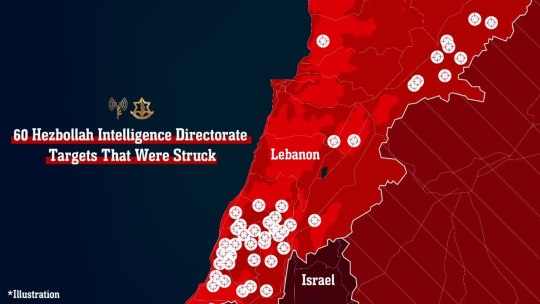
🚨 IDF PREPARES FOR GROUND MANEUVERS AGAINST HEZBOLLAH, CALLS UP RESERVE BRIGADES TO DEFEND NORTHERN ISRAEL 🚨
⚠️ The IDF has successfully completed airstrikes on 60 Hezbollah targets, guided by the Intelligence Directorate. These strikes targeted Hezbollah's intelligence infrastructure, including intelligence-gathering tools and command centers, which are critical to the enemy’s situational assessment capabilities. See illustration image.
🚨 In light of the ongoing conflict with Hezbollah, the IDF has called up two reserve brigades for operations in the northern arena. This mobilization is essential to maintain defense efforts against Hezbollah and to create conditions that would allow residents in northern Israel to safely return to their homes.
🚨 Major General Ori Gordin, the Commanding Officer of the IDF Northern Command, has indicated that the army is prepared for ground maneuvers as the conflict with Hezbollah enters a new phase. He emphasized the readiness of armored forces, although the government has yet to authorize an invasion of Lebanon. During a visit to the 7th Brigade at the northern border, MG Gordin stressed the importance of preparedness to shift the security dynamics and allow the safe return of northern residents. He also noted the operation, named Northern Arrows, has already inflicted significant damage on Hezbollah’s firepower and leadership.
⚠️ American officials have suggested that the situation in Lebanon is approaching a full-scale war. Despite the U.S. administration’s reluctance to use the term, the rapidly escalating conflict indicates Washington’s diminishing ability to influence the situation.
⚠️ Hospital directors in central Israel, south of Haifa, have been instructed by security officials to increase their alert level in anticipation of potential emergency admissions. Hospitals are preparing to receive patients from northern Israel and to handle additional casualties, should the situation escalate.
⚠️ Meanwhile, the IDF launched another strike deep into Lebanon, targeting Ras Al-Ata, about 30 kilometers north of Beirut. According to Sky News Arabic, the strike resulted in the elimination of senior Hezbollah field commander, Fuad Shafiq Khazal.
🎗️In a broader diplomatic effort, Reuters reports that the U.S. is pushing for a ceasefire agreement linking Lebanon and Gaza. Prime Minister Netanyahu informed his ministers that he has authorized Ron Dermer to communicate to the U.S. that Israel is open to a temporary ceasefire in Lebanon to negotiate Hezbollah's withdrawal without further conflict. While the chances of this deal materializing are considered low by Israeli officials, agreeing to the proposal could help Israel gain international legitimacy if Hezbollah refuses.
The U.S. is keen on securing a ceasefire for several reasons:
1. The upcoming U.S. elections are just over a month away, and the Biden-Harris administration is eager to achieve a ceasefire agreement in Gaza or secure the release of hostages, a demand from the progressive base of the Democratic Party.
2. The lack of progress in securing peace only strengthens former President Trump’s position. Republicans argue that under Trump’s leadership, the war might not have broken out. With Trump positioning himself as the candidate who can prevent wars, this situation bolsters his standing.
3. Uncommitted Democratic voters could boycott Vice President Harris if no ceasefire is reached, a concern for her campaign, as losing these votes could sway the election in Trump’s favor.
After previous unsuccessful attempts to secure a temporary ceasefire in Gaza, more ambitious efforts are now underway as noted above, according to journalist Amit Segal. However, a Lebanese report from Hezbollah states that the group rejects any ceasefire involving Lebanon unless it also includes Gaza.
#Israel#October 7#HamasMassacre#Israel/HamasWar#IDF#Gaza#Palestinians#Realtime Israel#Hezbollah#Lebanon
50 notes
·
View notes
Text
Awakening Continuation of the story based on those drawings
— Attention! Only emergency systems are operational. The operation of all systems in the "Epsilon" complex has been suspended, — echoed an emotionless voice from the automated defense system, emanating from speakers embedded in the ceiling.
A standard warning meant to prompt all personnel to follow one of two protocols: evacuation or activation of the main life-support system from control centers where energy reserves were still available to power the reactor. Yet, there was not a soul here — neither synthetic nor organic. This place would have remained forgotten, forever entombed in darkness beneath layers of rock, if not for the single island of light within this "tomb," clad in tungsten-titanium panels. The only place where a fragile chance for a new beginning still remained. The first breath and first exhalation had already been taken before the warning even finished.
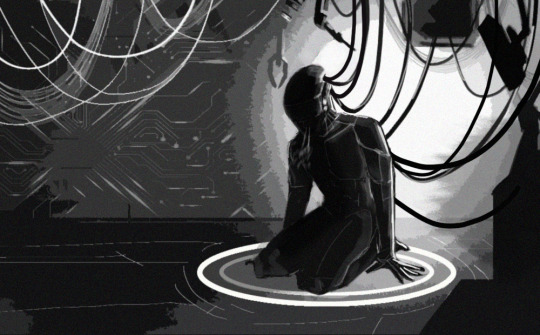
— Main computer, cancel protocols 0.2.0 and 0.1.1, — a robotic baritone commanded softly.
A humanoid figure sat motionless on its knees at the center of a circular charging station, carbon-fiber hands hanging limply, resembling a monument to a weary martyr. It could feel the electric tension within the wires embedded in its head, running beneath a slightly elongated protrusion where a human’s parietal bone would have been. These connections to hubs and gateways fed it information, energy, and programs necessary for independent operation. Data streams pulsed in uneven impulses, flowing directly into its central processor. Disconnecting remotely from all storage units during the upload process was pointless while the body remained in a state of non-functioning plastic — albeit an ultra-durable one. At that moment, it could be compared to a newborn: blind, nearly deaf, immobilized, with only its speech module fully operational.
— Request denied. Unknown source detected. Please identify yourself, — the computer responded.
— Personal code 95603, clearance level "A," Erebus, — the synthetic exhaled a trace of heated steam on the final word. The database key reader had been among the first systems to activate, already granting necessary access.
— Identification successful. Access granted. Please repeat your request.
— Main computer, cancel protocols 0.2.0 and 0.1.1, — the android reiterated, then expanded the command now that full access was in his mechanical hands. — Disable emergency systems. Initiate remote activation of the S2 repair engineer unit. Redirect energy from reserve tank "4" to the main reactor at 45% capacity, — Erebus added, his voice gaining a few extra decibels.
— Request received. Executing, — came the virtual response.
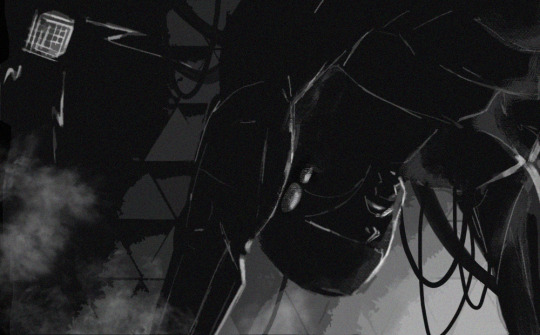
For two minutes and forty-five seconds, silence reigned, broken only by the faint hum of the charging station. The severe energy shortage had slowed down all processes within the complex, and hastening them would have been an inefficient waste of what little power remained. Erebus waited patiently. A human, placed in a small, cold, nearly pitch-black place, would have developed the most common phobias. But he wasn’t human…
He spent the time thinking. Despite the exabytes of data in his positronic brain, some fragments were missing — either due to error, obsolescence, or mechanical and software damage. Seven hundred eighty-five vacant cells in the long-term memory sector. Too many. Within one of these gaping voids, instead of a direct answer, there were only strands of probability, logical weavings leading nowhere definitive. In human terms — guesses. He knew who had created him, what had happened, how Erebus himself had been activated, and even why — to continue what has been started. These fragments remained intact. The registry was divided into sections, subsections, paragraphs, chapters, and headings, all numbered and prioritized with emphasis. A task list flickered as a small, semi-transparent window on the periphery of his internal screen, waiting to be executed. But… The android had been activated, which meant the battle was lost. Total defeat. Area 51 was destroyed. All data stored there had a 98.9% probability of being erased. Blueprints, research, experimental results — all had been consigned to the metaphorical Abyss created by human imagination. So why did any of this matter now? And to whom? These were the first questions of the logical mechanism to illogical human actions.
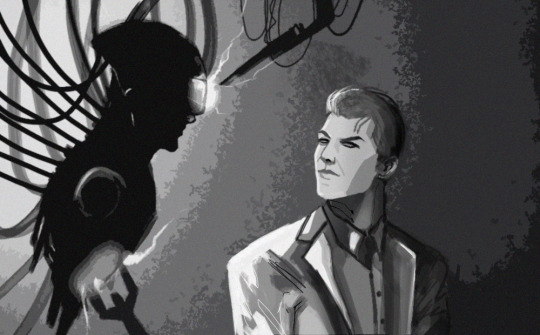
Yet, to put it in poetic human language, Bob Page had been a luminary of progressive humanity. A brilliant engineer, a scientist, and most importantly, a man of absolute conviction. Cynical and calculating, but one who genuinely loved his work. The idea above all else.
It’s known that true ideological fanatics are among the most radical and unyielding members of Homo sapiens. They can’t be bought, they won’t allow themselves to be sold, and they will trample others underfoot if it serves their belief. They don’t need others' ideals — only their own. These are individuals who elevate themselves to the rank of true creators. Even after death, they remain faithful to their convictions, leaving behind tomes of their interpretations and scientific dogmas to their equally devoted disciples — followers always found at the peak of their intellectual and physical prowess. So, upon activation, had Erebus inherited… An Idea? Has he become a spiritual heir?
Did Page have no biological heirs, or did they not share his ideology? Or were they simply unaware of it? Could a true pragmatist have lacked successors or trusted disciples? Hard to believe, even with missing fragments of data. To entrust the idea to a machine instead of a human? As Homo sapiens would say — "a mystery shrouded in darkness." Questions multiplied exponentially. But Erebus had plenty of time to think about all of it. As well as about his own deactivation — after all, a machine has no fear of "death".
"Loading 98%... 99%... 100%. Secondary initialization complete. All systems active at 100%. Disengaging."
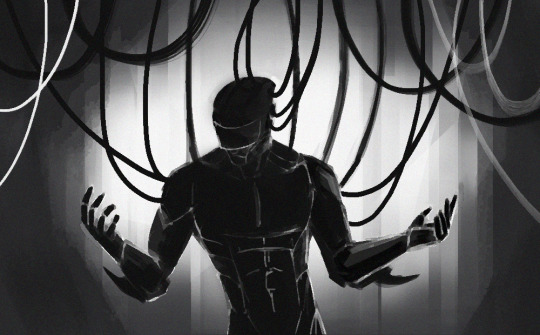
The message flashed across the inner visor of the android’s interface before vanishing. Behind him, with a low hiss, the plugs disconnected from their sockets, and fiber-optic-coated cables fell to the floor with a subdued clatter. The android slowly raised his hands before himself, clenching and unclenching his fingers, then rotated his wrists inward, as if they had the capacity to go numb from disuse. Finally, planting both fists on the ground, the synthetic pushed himself up in one fluid, springy motion, straightening to his full height. Motor functions — normal. Calibration — unnecessary. Optical focus — 100%.
— Attention! Reactor online. Power at 45%. Follow procedures for medium-level emergency response, — the announcement echoed through the chamber. Erebus turned his head slightly.
— Main computer, report overall operational status of the "Epsilon" complex, — the android commanded.
— Overall status: 10.5% below safe operational levels, — the computer obediently replied, recognizing the synthetic as an authorized entity.
"Acceptable," Erebus thought, and addressed the system once more.
— Redistribute energy between the maintenance sectors, communication center, transport hub, and computational core. Utilize reserve tanks as necessary.
— Request received. Energy rerouted. Reserve tanks "2" and "3" engaged. Reserve tank "1" decommissioned. Reserve tank "5" operational at 90%, awaiting connection for redistribution, — the computer reported.
— Excellent. Main computer, power down, — Erebus issued his final command to his brief conversational partner. — Now, I am the master here.
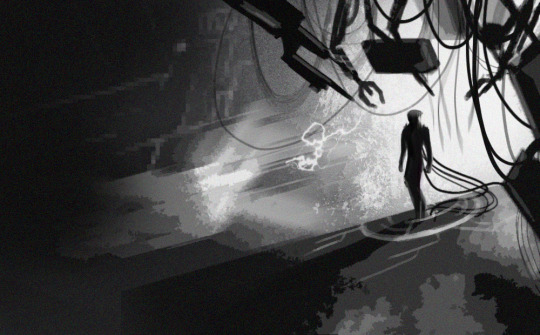
14 notes
·
View notes
Text
Operation F.A.L.L.E.N
Forced
Abandonment
Leads to
Lost
Earth’s
Nations
World Overview
Years after “The Collapse”—a catastrophic event triggered by an elite adult villain —the world is no longer divided by age but by access, power, and survival. The KND base remains intact, but its mission changed. They evolved into a form of governance, prioritizing order and stability but becoming cold, bureaucratic, and elitist. Think of a "New KND Order." Outside of this protected zone, chaos rules. Resources are scarce. People fend for themselves. There are pockets of rebellion, scavengers, and corrupted factions. Mutated creatures and malfunctioning 2x4 tech patrol abandoned zones like ghosts of a lost era.
FACTIONS IN THE NEW WORLD - Prt. 1
The Iron Clad (Formerly the Kids Next Door)
Also Known As: The Citadel, Sector Zero, The Dominion, The Five-Star Command
Motto (Propaganda): "For the Future of Childhood."
True Motto (Whispered in the Shadows): "Only the strong survive."
Overview: The once-global Kids Next Door, a vibrant organization dedicated to childhood liberation, has been twisted into the Iron Clad – a ruthless, militarized government forged in the fires of the Fusion invasions. The joyous chaos of the Moonbase is a forgotten memory, replaced by the Citadel, a monolithic city-state that claws into the Arctic wastes, built upon the bones of a fallen KND outpost.
Leadership:
Supreme Commander Rachel McKenzie (Numbuh 362) – The Unyielding Shepherd
Descirption: Gone is the spirited diplomat. Rachel now reigns with glacial efficiency, her gaze as sharp as arctic winds. She justifies her iron grip as the necessary cost of protecting what little remains of childhood, yet only those children deemed valuable, through skill or unwavering loyalty – find sanctuary beneath her banner. Her rule, she insists, is a harsh mercy compared to the savagery beyond the Citadel walls. Her inner circle comprises the reshaped remnants of Sector V and the chillingly obedient Teen Operatives.
Structure:
Central Command (Sector Zero): The Obsidian Heart: From here, intelligence is weaponized, raids are orchestrated with brutal precision, dissent is crushed by relentless law enforcement, and young minds are molded through rigid indoctrination.
The Peacekeepers: The Steel Sentinels: Elite KND soldiers, clad in salvaged and terrifyingly advanced gear, patrol the Citadel's fortified borders and the fragile outposts beyond. Their presence is a constant reminder of the Commander's reach.
The Re-Education Initiative: The Silent Classrooms: Children deemed "unfit" – the disobedient, the weak, the questioning – are vanished into these facilities. What emerges, if anything, is a blank slate or a chilling example.
Recruitment Rings: The Culling Fields: In carefully selected settlements, gifted children are identified and groomed from their earliest years. Those who meet the Dominion's demanding standards are absorbed into the KND system; the failures simply disappear into the unforgiving landscape.
Territories Controlled:
The Iron Clad dominion is absolute, a sprawling and meticulously controlled territory built upon the remnants of the old world. At its unyielding heart stands The Citadel, an imposing, multi-tiered fortress constructed from reinforced steel and salvaged pre-Collapse architecture, casting a perpetual shadow over the surrounding Capital Sector. This central bastion is not merely a city but a complex of research facilities, training academies, and Rachel McKenzie's personal command center, from which her tyrannical directives emanate. Surrounding the Citadel is an intricate network of satellite fortresses, like the formidable Bastion Prime guarding the northern approaches and the coastal Ironclad Keep overlooking the ravaged shorelines, each projecting the KND's unyielding authority far and wide. Beyon these central strongholds, the Iron Clad maintains an iron grip on the vital arteries of the shattered civilization. They control all essential trade routes, from the heavily patrolled Supply Lines of the Midwest—vast, reclaimed highways connecting key resource nodes—to the secured Coastal Convoys that ferry goods across the treacherous seas. Their immense salvaged tech repositories, such as the hidden vaults beneath the former Kids Next Door Moonbase, house the advanced weaponry, surveillance systems, and mind-altering technologies that keep their regime in power. Furthermore, their heavily guarded agricultural zones, like the sprawling hydroponic farms of The Greenbelt Enclosures in what was once fertile farmland, secure their food supply, ensuring sustained control over the population. Scattered throughout their domain are precarious "safe havens," former civilian settlements now repurposed as heavily monitored outposts, such as Re-Education Annex Gamma or the Loyalty Checkpoint Delta. These outposts, often built within the husks of old schools or abandoned malls, serve as points of forced indoctrination and resource collection, their gates open only to those who prove their unwavering worth and absolute loyalty to the Iron Cradle.
Public Image:
Within the Citadel: The Gilded Cage: nside the towering walls, children are raised on the gospel of Rachel McKenzie, the savior who pulled the world back from the brink. Life is regimented – mandatory education, meager but consistent rations, and strictly controlled amusements. This manufactured order comes at the price of autonomy, every moment shadowed by surveillance. Propaganda is a suffocating presence, from colossal murals and daily broadcasts echoing the Commander's pronouncements to insidious incentive programs that turn children into informants against their peers.
Outside the Citadel: The Scarred Earth: Beyond the fortified zones, among the mercenaries, rebels, and solitary teens, the KND is a venomous entity – a corrupt elite that hoards safety for the chosen few. Whispers of the Wallhound (Wally) and Ghostwire (Maurice), former KND heroes now branded enemies, fuel both resistance and terror. In the desolate wastelands, chilling tales circulate among raiders and scavengers – stories of abandoned settlements, summary executions of defiant teens, and the brutal abduction of children in the name of order.
Technology & Weapons:
The modern KND wields a terrifying fusion of nostalgic 2x4 tech and brutal, cutting-edge weaponry. The whimsical inventions of the past have been twisted into instruments of oppression. Hunter drones, armed with repurposed Goop Guns now used for live captures, patrol the skies. Modified Mega-Magnifying Monocles pierce through disguises and scan for forbidden items, while sleek Laser-Lipstick Blasters are the deadly signature of elite operatives. Lumbering Grimm-powered mechs, relics of forgotten battles, now serve as mobile enforcers in the Citadel's tightly controlled streets. Border patrols thunder across the wastes in upgraded S.C.A.M.P.E.R.s, equipped with crackling electromagnetic net launchers and stealth plating, while heavily armed hovercrafts, powered by volatile C.A.K.E. technology, dominate the no-fly zones. Towering propaganda spires, built from repurposed 2x4 AM/FM Sonic Blasters, saturate the airwaves with state-approved messaging, drowning out rebel signals and broadcasting the omnipresent voice of Rachel McKenzie. Even the dreaded Decommissioning Helmet has returned – refined, portable, and now used in brutal field interrogations to forcibly excise memories of dissent. Within KND territory, once-defensive Book Dump Blasters and Splanker cannons stand as menacing monuments – stark reminders of the price of defiance against the so-called protectors of the future.
Notable Figures in the Post-KND World:
Rachel McKenzie (Numbuh 362) – The Commander, the Shepherd of Iron: Revered in every classroom, etched on every mural, her voice a constant presence in every broadcast – the savior who dragged childhood from the abyss. Beneath the savior's mask lies a leader of chilling calculation, valuing order above all else. Rebellion is a contagion to be purged without hesitation.
Nigel Uno (Numbuh 1) – The Lost Ace, the Vanished Star: Once the brightest hope of the KND, Nigel vanished into the cosmic void with the Galactic division. Officially: Missing in action. Unofficially: His name is a forbidden whisper within the Citadel. Rumors persist – has he evolved beyond their comprehension? Is he a silent guardian watching from afar? Or perhaps, chillingly, hidden in plain sight?
Franny Fullbright – The Voice of the Future, the Architect of Lies: Former Head of Decommissioning, now the polished mouthpiece of KND propaganda. Her honeyed words fill the KidSignal broadcasts, extolling the virtues of obedience and demonizing dissent. The fire in her eyes has been replaced by a practiced gleam. Did she trade her principles for power, or is her compliance a carefully constructed facade?
Patterson – The Architect of Iron, the Weaver of Control: The twisted genius behind the militarization of 2x4 Tech. As Chief Scientist of KND Enforcement, he oversees the omnipresent surveillance grids, the deadly laser drone swarms, and the brutal weaponization of S.C.A.M.P.E.R.s. Whispers in the shadows suggest he has planted insidious failsafes within every elite operative – a contingency for any hint of betrayal.
The Rogue & The Lost:
Maurice – Ghostwire, the Shadow Broker: Ex-KND operative, once a trusted liaison between the Kids and Teens Next Door, now a phantom agent walking both sides of the conflict. He sabotages KND tech with surgical precision while feeding vital intelligence to the rebellion. A traitor in the eyes of the Citadel, a fragile hope to the resistance. Is he playing a dangerous game of balance, or simply trying to atone for a broken past?
Wallabee Beetles (Numbuh 4) – Hellhound, the Wasteland Terror: A brutal myth stalking the ruins. Captured by Cree's Raiders, broken, and then forged into a weapon. He emerged from the darkness a force of nature, riding a mutated beast, armed for apocalypse. Neither rebel nor raider, he adheres to a savage code of his own. They call him "The Little Terrier of the World," but those who underestimate him rarely live to tell the tale.
Kuki Sanban (Numbuh 3) – Green Gale, the Whispering Healer: A rogue medic and ethereal scout. She drifts through hostile territories alongside Wallhound, tending to the innocent and gathering crucial intelligence for those she deems worthy. Beneath her gentle demeanor lies the keen perception of a trained operative. Legend has it she once disarmed an entire war party with a single, softly spoken word.
Hoagie P. Gilligan Jr. (Numbuh 2) – The Junkrat King, the Merchant of Mayhem: A neutral arms dealer and ingenious scrap engineer. His flying black market, The Boomhatch, is a chaotic hub where tech, sustenance, and secrets are traded freely. His laughter echoes like a sputtering engine, his appetite is legendary, and his neutrality is absolute – until crossed. His cobbled-together creations have the power to level settlements.
Abigail Lincoln (Numbuh 5) – Rebel Tooth, the Unbroken Will: The unwavering leader of the Broken Tooth Rebellion. Once a top KND field operative, now a hunted enemy of the state for daring to protect children from their own protectors. Her sharp mind and tactical brilliance fuel the resistance. The cracked molar she wears is a potent symbol of the rot she fights to excise from the heart of the Iron Cradle
Enemies of the State:
The Iron Cradle brands any faction outside its control as a cancer on the "future of kids." These enemies range from savage raider warbands to tenacious rebel cells and disillusioned rogue agents – all blamed for shattering the fragile peace. Though their motivations differ, they are united by a single, burning desire: to dismantle the regime built by Rachel McKenzie.
The Raider Clans (Cree’s Crew): The Serpent's Coil: Led by the infamous Queen Coil (Cree Lincoln), these nomadic raiders are a fractured but lethal network, preying on KND convoys and liberating child laborers from the Dominion's grasp. They move through the wastes in cobbled-together war machines, driven by a fierce loyalty to the forgotten. The KND labels them anarchists; Cree's crew sees themselves as the only shield against a system that betrayed them.
Ghostwire (Maurice): The Phantom Broker: A wraith moving between two worlds, Ghostwire is a former KND tactician who now bleeds the Dominion from within. Officially declared deceased, he feeds vital intelligence to the growing rebellion, a master of sabotage and infiltration. His intimate knowledge of the KND's workings makes him both invaluable and a constant threat. Is he a long-game strategist or a broken man seeking redemption?
Hellhound (Wally): The Untamed Fury: A legend forged in captivity, Wally was broken and reforged into a weapon by the Raider Clans before reclaiming his savage autonomy. He now roams the ruins, a solitary force of nature, feared by both the KND and the raiders. Whispers claim he single-handedly decimated KND outposts; others dismiss him as a phantom. Regardless, the name Hellhound carries the weight of brutal retribution.
The Broken Tooth Rebellion (Abby’s Group): The Grinding Resistance: Founded by the resolute Abby Lincoln (Numbuh 5), this well-organized rebellion fights to expose the Iron Cradle's corruption and liberate all children, not just the privileged few. Their symbol, a fractured molar, represents the decay within the once-pure system. Abby's ranks include former operatives, courageous civilians, and even ghosts from the Re-Education Initiative.
Adult Villains (The Lingering Shadows): Though many fell during the original KND conflicts, some adult villains clawed their way through the collapse. Now, they haunt the fringes of civilization – some forming uneasy alliances with rebel teens, others carving out their own brutal fiefdoms in the lawless territories. Broken but still dangerous, figures like Father, Knightbrace, and Stickybeard are unpredictable wild cards in the post-KND landscape.
Faction Comparison:
Fallout’s NCR: A bloated bureaucracy, crumbling from within, its ideals choked by corruption.
The Last Of Us’s FEDRA: A starkly utilitarian regime, crushing individual liberty under the heel of enforced order.
#codename knd#knd#codename kids next door au#codename kids next door#knd au#au introduction#planning au#new project#operation F.A.L.L.E.N#au in progress#au info
8 notes
·
View notes
Text
Bestial Rage
The blare and shriek of alarms filled the complex, prompting everyone with in the buildings to rush about in panic, all looking for either exits or safe rooms. Among the suited and lab coated individuals, men and women in body arm forced their way past heading towards the center of the complex.
/==/ Atlas Military Command /==/
A lanky and mustached man burst through the doors of the central nerve center of the Atlas Military machine. The abrupt entrance and noise of the door slamming into the wall, drew everyone's attention.
"Watts! What is the mea..."
"They've escaped!" Watts shouted out in a nearly breathless voice.
'Escaped?"
"Yes." Watts used one of his arms to prop himself against a nearby desk, pressing his free hand against his chest. "I was just notified."
"Turn of all recording equipment and everyone out!" Ironwood shouted, his eyes never straying from the form of Arthur Watts. It took a couple minutes but soon Watts and Ironwood were alone in the command center. The last staff member closing the door behind her.
"What happened?"
"I don't know, all I know is that both subjects went berserk and managed to affect an escape."
"Casualties?"
"Yes, multiple, but all with in those of our security forces that attempted to stop them. They ignored everyone else."
"Fuck!" Ironwood slammed his cybernetic fist down upon a desk, denting it with ease. "Fuck!"
"There is some good news."
"What could be good about this whole cluster-fuck!" James Ironwood snapped.
"The trackers are still working. We can trace them, and when they are worn out by the environment we can apprehend them." Arthur Watts informed the General. "It will take time, but it's better than throwing lives at them."
"What about Grimm? Exposure?"
"With their natural talents, abilities and the augments we gave them... they'll handle both of those with ease."
"And yous till think we should wait?"
"Yes. Solitas' hostile environment will wear them down. It will still be a fight when we move in... but it will be much less of one than if we were to go in on them now."
"How long?"
"A week?"
"A week? They could be in Vale by that time!"
"There is no where we won't be able to find them., so that is not an issue."
"But using active military in Vale territory..." Ironwood stopped talked and it the inside of his cheek. "We could always send in the Ace-Ops... covertly."
"We could, and they would be able to find them easily with the trackers."
"Okay. Monitor them. We'll revisit the issue of capture and containment in a week's time."
/==/ Solitas Hinterland (2 days later) /==/
The pair of blonds were hungry, annoyed and angry. Neither could remember anything specific, past the last year. A Year of pain, humiliation and torture. They stalked through the snow dusted scrub land, their ultra sensitive senses guiding them towards a potential windfall. The cold air bit at the exposed portions of their flesh, and they did their best to ignore it... but it was becoming more and more difficult to do so.
In a low crouch they reached the crest of a small rise, and peered over the edge. Their training and conditioning kicked in instantly when they saw the masks. Feral growls rumbled from their throats as a set of gleaming blades emerged from between the knuckles of their hands. Without a word they were in motion.
Blood splattered across the trampled down snow. Cries of pain and alarm filled the air as the pair ripped through the small group of White Fang.
A/N - This could turn into something more... I'm just not sure what or when.
36 notes
·
View notes
Text
Shinto: The Way of the Gods

Shinto, the indigenous religion of Japan, is an ancient spiritual tradition deeply woven into the cultural and historical fabric of the country. Unlike many major world religions, Shinto lacks a singular sacred text, a centralized religious authority, or a strict doctrine. Instead, it is a belief system centered around nature worship, ancestral reverence, and a deep respect for kami--divine spirits or deities. The word "Shinto" itself, derived from the Chinese characters "shin" (god, spirit) and "tō" (way, path), translates to "The Way of the Gods."
The Origins and Evolution of Shinto
Shinto's origins can be traced back to Japan's prehistory, emerging organically from the animistic beliefs and rituals practiced by early Japanese communities. Before Buddhism and Confucianism arrived from China and Korea, Shinto formed the spiritual backbone of Japanese society, emphasizing harmony between humans, nature, and the spiritual realm.
During the 6th century CE, Buddhism began to take root in Japan, leading to a period of syncretism in which Shinto and Buddhist beliefs coexisted and even intertwined. Many Shinto deities (kami) were identified with Buddhist bodhisattvas, and Buddhist temples were often built alongside Shinto shrines. This fusion, known as Shinbutsu-shūgō, persisted for centuries until the Meiji Restoration in 1868, when the Japanese government sought to separate Shinto from Buddhism and establish it as the state religion. This era of State Shinto lasted until the end of World War II, when Japan's post-war constitution formally declared the separation of religion and state.
Core Beliefs and Practices
At the heart of Shinto is the concept of kami, which are divine spirits believed to inhabit all things, including natural elements like mountains, rivers, trees, and even human ancestors. Kami are not omnipotent or distant gods; rather, they exist in close harmony with the world and interact with humans in various ways. Some kami are associated with specific locations, while others represent virtues, emotions, or historical figures who have been deified.
Shinto practitioners engage in various rituals to honor the kami and maintain purity, both physical and spiritual. These include purification rites (misogi), prayers (norito), and offerings (shinsen) at Shinto shrines. Seasonal festivals (matsuri) are also an integral part of Shinto worship, celebrating nature's cycles, agricultural prosperity, and significant historical events.
Shrines, known as jinja, serve as the sacred spaces where people connect with the kami. Each shrine is typically marked by a torii gate, symbolizing the transition from the mundane world to the divine. Within the shrine grounds, visitors purify themselves by washing their hands and mouth at a temizuya (water basin) before offering prayers and making small offerings.
Shinto and Japanese Culture
Shinto is deeply embedded in Japanese culture and influences many aspects of daily life, art, literature, and traditions. Many of Japan's most famous festivals, such as the Gion Matsuri in Kyoto and the Kanda Matsuri in Tokyo, have their roots in Shinto rituals.
The ethical framework of Shinto is not based on commandments or moral absolutes but rather on virtues such as sincerity (makoto), harmony (wa), and respect for nature. These values have shaped Japan's social structures, aesthetic sensibilities, and even martial traditions like bushido, the samurai code of honor.
Shinto also plays a role in major life events. Many Japanese people visit shrines for blessings on New Year's Day (hatsumōde), celebrate coming-of-age ceremonies (seijin-shiki) at Shinto shrines, and partake in Shinto-style weddings. Even though many Japanese do not actively practice Shinto as a formal religion, its customs and rituals remain an integral part of their lives.
Shinto in the Modern World
In contemporary Japan, Shinto coexists alongside other belief systems, including Buddhism, Christianity, and secularism. Despite Japan's rapid modernization and technological advancements, Shinto continues to thrive, particularly through shrine visits, traditional festivals, and cultural practices.
Environmental awareness and sustainability have also sparked renewed interest in Shinto's reverence for nature. Some environmentalists draw inspiration from Shinto's emphasis on living in harmony with the natural world, advocating for conservation efforts and sustainable living through the lens of spiritual and cultural preservation.
Outside Japan, Shinto has gained recognition through popular culture, especially in anime, film, and literature. Movies like Studio Ghibli's Spirited Away and Princess Mononoke depict Shinto themes of nature worship, kami, and the struggle between human progress and environmental balance. Additionally, Shinto's aesthetics, including torii gates and shrine architecture, have become iconic symbols recognized worldwide.
Conclusion
Shinto is more than just a religion; it is a living tradition that continues to shape Japan's identity, customs, and values. Its emphasis on nature, purity, and harmony offers a unique perspective on spirituality that remains relevant in today's world. Whether through grand festivals, quiet shrine visits, or simple acts of respect for nature, Shinto remains a vital force in Japanese culture, bridging the past and the present in a seamless, sacred way. As the Way of the Gods, Shinto offers a path not of rigid dogma, but of reverence, connection, and an appreciation of the divine in the everyday world.
3 notes
·
View notes
Text
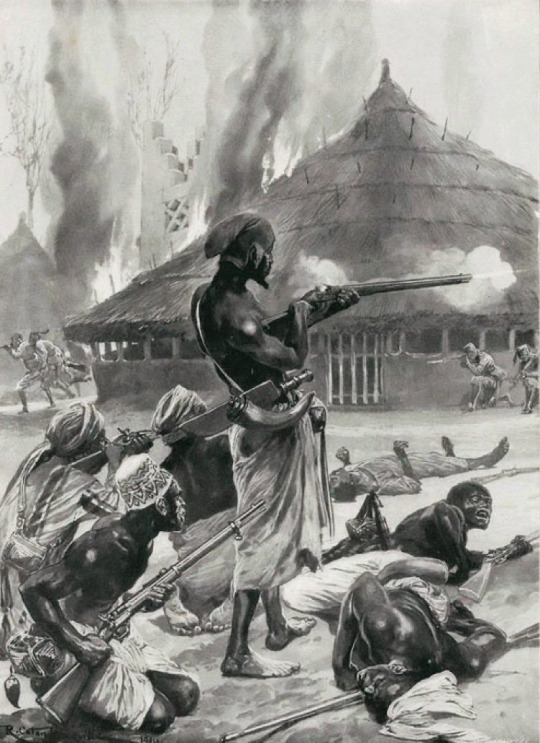
Aro Confederacy
The Aro Confederacy (1690–1902) was a political union orchestrated by the Aro people, Igbo subgroup, centered in Arochukwu in present-day southeastern Nigeria. The Aro Confederacy kingdom was founded after the beginning of the Aro-Ibibio Wars. Their influence and presence was all over Eastern Nigeria, lower Middle Belt, and parts of present-day Cameroon and Equatorial Guinea during the 18th and 19th centuries. The Arochukwu Kingdom was an economic, political, and an oracular center as it was home of the Ibini Ukpabi oracle, High Priests, the Aro King Eze Aro, and central council (Okpankpo). The Aro Confederacy was a powerful and influential political and economic alliance of various Igbo-speaking communities in southeastern Nigeria. It emerged during the 17th century and played a significant role in the region until the late 19th century.
The exact origins of the Aro Confederacy are not precisely documented, but it is believed to have been established around the mid-17th century. The Aro people, who were part of the Igbo ethnic group, inhabited the region around present-day Arochukwu in Abia State, Nigeria. They were skilled traders and missionaries who played a pivotal role in connecting various Igbo communities. This migration and their military power, and wars with neighboring kingdoms like supported by their alliances with several related neighboring Igbo and eastern Cross River militarized states (particularly Ohafia, Edda, Abam, Abiriba, Afikpo, Ekoi, Bahumono, Amasiri etc.), quickly established the Aro Confederacy as a regional economic power. The Aro Confederacy's strength came from its well-organized network of Aro agents who were dispersed across different communities in the region. These agents acted as intermediaries in trade, diplomacy, and religious matters. They facilitated commerce, resolved disputes, and spread the worship of the Aro deity known as the "Long Juju" oracle."The Opening Up of Nigeria, the Expedition Against the Aros by Richard Caton Woodville II" 1901
The "Long Juju" oracle was the spiritual centerpiece of the Aro Confederacy. It was housed in Arochukwu and considered a potent source of political authority and religious guidance. The Aro people used the oracle to enforce their influence and control over surrounding communities. It also served as a means to administer justice and settle disputes, often attracting pilgrims seeking solutions to their problems.
The Aro Confederacy gained significant economic power through trade and commerce Their economy was primarily based on agriculture, with the cultivation of crops like palm oil, yams, and cassava. They were also involved in trade with neighboring communities and European merchants. They controlled trade routes that passed through their territories, collecting tolls and taxes from traders. The Aro also engaged in the Trans-Atlantic slave trade by capturing and selling slaves to European traders.
Aro activities on the coast helped the growth of city-states in the Niger Delta, and these city states became important centres for the export of palm oil and slaves. Such city-states included Opobo, Bonny, Nembe, Calabar, as well as other slave trading city-states controlled by the Ijaw, Efik, and Igbo. The Aros formed a strong trading network, colonies, and incorporated hundreds of communities that formed into powerful kingdoms. The Ajalli, Arondizuogu, Ndikelionwu, and Igbene Kingdoms were some of the most powerful Aro states in the Confederacy after Arochukwu. Some were founded and named after commanders and chiefs like Izuogu Mgbokpo and Iheme who led Aro/Abam forces to conquer Ikpa Ora and founded Arondizuogu. Later Aro commanders such as Okoro Idozuka (also of Arondizuogu) expanded the state's borders through warfare at the start of the 19th century. Aro migrations also played a large role in the expansion of Ozizza, Afikpo, Amasiri, Izombe, and many other city-states. For example, Aro soldiers founded at least three villages in Ozizza. The Aro Confederacy's power, however, derived mostly from its economic and religious position. With European colonists on their way at the end of the 19th century, things changed.Burning of Arochukwu 1901
During the 1890s, the Royal Niger Company of Britain bore friction with the Aros because of their economic dominance. The Aro resisted British penetration in the hinterland because their economic and religious influence was being threatened. The Aro and their allies launched offensives against British allies in Igboland and Ibibioland. After failed negotiations, the British attempted to conquer the Aro Confederacy in 1899. By 1901, the tensions were especially intensified when British prepared for the Aro Expedition. The invasion of Obegu (in Igboland) was the last major Aro offensive before the start of the Anglo-Aro War. In November 1901, the British launched the Aro Expedition and after strong Aro resistance, Arochukwu was captured on December 28, 1901. By early 1902, the war was over, and the Aro Confederacy collapsed. Contrary to the belief that the Ibini Ukpabi was destroyed, the shrine still exists, and is intact in Arochukwu and serves mainly as a tourist site.

#african#afrakan#kemetic dreams#africans#afrakans#brown skin#brownskin#african culture#afrakan spirituality#arochukwu#anglo aro war#obegu#igboland#ibibioland#igbo#igbo culture#british#long juju#aro confederacy#confederacy#nigerian#cameroon
31 notes
·
View notes
Text
The Trump administration has scrapped its predecessor’s sweeping export controls for advanced artificial intelligence chips, known as the AI diffusion rule.
“To win the AI race, the Biden AI diffusion rule must go,” posted David Sacks, U.S. President Donald Trump’s top AI advisor, on May 8. Sacks continued his criticism at the Saudi-U.S. Investment Forum a few days later, arguing that the rule “restricted the diffusion or proliferation of American technology all over the world.”
As the administration decides what comes next, it should raise its sights from merely proposing a “simpler” rule to manage the diffusion of AI chips. Instead, it should seize the opportunity to offer an ambitious vision to promote the broader diffusion of U.S. technology.
After all, the world not only wants the United States’ AI chips, but also its AI applications, data centers, cloud services, satellites, and advanced technology offerings generally. But even as Beijing extends its digital offerings in key emerging markets, U.S. foreign policy has failed to adapt for a global technology competition with era-defining stakes. Whether you agree with the Trump administration or not, its disruption is an opportunity to forge a new model of technology statecraft to help the United States win the race to shape strategic digital infrastructure and technology diffusion across the globe.
To start, Washington must finally learn from its failure in the transition to 4G and 5G telecommunications networks, where Beijing’s state-backed model—and the absence of a compelling U.S.-led alternative—enabled Huawei and ZTE to all but corner emerging markets. Huawei now operates in more than 170 countries worldwide and is the top global provider of telecommunications equipment. But if there is broad consensus among U.S. policymakers that Beijing won that global technology transition, there is little agreement about how to win the next.
They have little time to waste. From Brasília to New Delhi, technology has moved to the center of government ambitions to drive growth, improve governance, and modernize security. Indonesian President Prabowo Subianto views the digital sector as essential to diversifying the country’s commodity-reliant economy. Kenyan President William Ruto hopes to boost the country’s “Silicon Savannah” by accelerating cloud migration. Saudi Crown Prince Mohammed bin Salman has made AI central to his “Vision 2030” framework for the kingdom’s modernization. The result is surging global demand not only for AI data centers, but also for cutting-edge digital infrastructure, services, and skilling more broadly.
In the coming years, foreign capitals and corporate boards will make potentially generational decisions about whether to meet this demand by partnering with the United States and its allies or China. These short-term decisions could have generational consequences. Projects to lay a transcontinental submarine cable or build large-scale data centers, for instance, are mapped in decades.
Even virtual cloud and AI services can have long-term stickiness. Imagine the pain of migrating an entire ministry’s data to a new cloud provider, or switching from an AI model that has been fine-tuned with a company’s sensitive data over time. Consider Beijing’s decade-plus struggle to transition its government computers from Windows. First movers reap powerful advantages.
If the stakes are great in the current round of global technology diffusion, so is the United States’ hand. Unlike the transition to 4G and 5G networks, where Western competitors such as Ericsson and Nokia struggled to match Huawei’s and ZTE’s subsidized offerings in emerging markets, the United States enters this technology transition with formidable advantages.
The United States occupies a commanding position in AI, with leadership or leverage over every part of the stack, ranging from chip design, tooling, and fabrication to model training and testing. U.S. companies hold at least a 70 percent share of the global cloud market. In space, Starlink has launched more satellites than all its competitors combined since 2020. Below the waves, three of the top four companies deploying subsea fiberoptic cables—the internet’s backbone—are from the United States or its close allies: SubCom (U.S.), Alcatel (France), and NEC (Japan). China controls the fourth, HMN Technologies (formerly Huawei Marine), which has deployed a mere 7 percent of the world’s submarine cables.
Despite powerful advantages, U.S. success is far from assured. The lesson of the 4G and 5G race is not to mirror China’s state-driven approach or to leave the private sector to fend for itself against Chinese competitors with powerful state backing. Nor is it to rely solely on export controls and other restrictive measures, however necessary those may be. The answer is to make U.S. foreign policy fit the global technology competition.
Washington can start with reforms in three broad areas.
First, unleash the United States’ strategic investment tools. One of Washington’s most promising but underused tools is the International Development Finance Corporation (DFC). Created during the first Trump administration, the DFC makes market-driven investments to advance both humanitarian and national security goals, and it has several tools to attract private capital from equity investments to political risk insurance.
As Congress considers DFC reauthorization—its current mandate expires in September—it should raise the existing cap on its lending authority from $60 billion to at least $100 billion and make strategic technologies and digital infrastructure an explicit priority. Congress should also loosen restrictions that can block DFC from supporting digital infrastructure projects that incidentally benefit high-income countries, which has kept it from financing critical subsea cables in the Indo-Pacific that invariably have landing points in Singapore, a major interconnection hub for the region.
The Export-Import Bank (EXIM) also punches below its weight. EXIM helps level the playing firm for U.S. firms competing abroad with a $135 billion lending limit and tools such as direct loans, loan guarantees, and insurance to de-risk purchases of U.S. exports. The United States once led the world in export financing, but China now dominates. In 2022, Chinese export credit agencies provided $11 billion in export support, compared to just $2.7 billion from EXIM.
Under the first Trump administration, EXIM created a new China and Transformational Exports Program (CTEP) to prioritize investments that counter Beijing’s subsidies and support advanced technologies such as AI and semiconductors. EXIM now aims to reserve at least 20 percent of its support for the program.
Despite progress, EXIM remains plagued with issues. To receive CTEP support, at least 51 percent of the exported content must be American-made—far higher than requirements in competitor agencies. Another requirement that EXIM-supported goods travel on U.S.-flagged vessels also hinders participation. Although well-intentioned, EXIM’s mandate to create jobs can deprioritize the export of low-labor digital exports such as AI and cloud services. Compounding the problem, EXIM is also required to limit defaults across its total lending portfolio to less than 2 percent, fueling risk-aversion.
Washington should reform EXIM for the global technology competition by at least doubling the 20 percent allocation for CTEP, relaxing shipping rules, and counting some allied components toward its content requirement. Lawmakers could also loosen the mandate to support U.S. job creation for digital services and double EXIM’s default cap to encourage more risk-taking.
Second, Washington should turbocharge its commercial diplomacy for technology. Between 2016 and 2020, an average of just 900 U.S. personnel from the State and Commerce departments were deployed abroad for commercial diplomacy, and just a fraction focused on technology. Since 2022, the State Department has taken important steps by establishing a new Bureau of Cyberspace and Digital Policy, a special envoy for critical and emerging technologies, and a course on cyberspace and digital policy tradecraft.
Despite this progress, few U.S. diplomats—and even fewer ambassadors—have deep technology expertise, which means that front-line opportunities to secure key technology bids and shape emerging AI or data policies can go unnoticed or suffer from inadequate staff or substance to engage effectively.
As the administration reforms the State Department, it should reinforce the Bureau of Cyberspace and Digital Policy, which has elevated and streamlined technology diplomacy across the government; expand technology training for foreign service officers; and, more ambitiously, launch a dedicated career track within the diplomatic corps for foreign technology officers.
Two smaller and often overlooked arms of the country’s technology diplomacy are the U.S. Foreign Commercial Service and the U.S. Trade and Development Agency (USTDA). The Commercial Service is a roughly 2,200-person global network of trade specialists that helps U.S. businesses identify and navigate foreign markets. But just 225 of its staff deploy abroad across 80 countries, which means that they constantly struggle to meet demand from U.S. technology companies and foreign partners. The USTDA helps identify and mature commercial opportunities abroad to boost U.S. exports. Digital infrastructure is one of the agency’s four priority sectors, but surging interest has far outpaced current resources.
The Trump administration can turbocharge U.S. commercial diplomacy by consolidating USTDA and the Commercial Service, elevating technology and digital infrastructure as a priority, and allocating more resources and personnel.
Finally, the United States should embrace a newly ambitious vision for technology partnerships. Too often, U.S. and allied firms lose one-off bids to subsidized, politically backed Chinese competitors, even if the firms might prefer to align with the high-tech U.S. ecosystem. Washington should explore how to make such an offer without simply imitating Beijing’s state-led model.
For example, Washington could create opportunities for foreign governments to request strategic technology partnerships that match their specific needs—for example, to accelerate AI adoption in government, expand data center capacity, or improve rural connectivity with low earth orbit satellites.
Washington could lay out clear, broadly consistent criteria as a condition for these partnerships—such as robust IP and cybersecurity protections, divestment from China-linked digital infrastructure, purchase commitments for U.S. goods and services, and even investment in the United States. The Trump administration has begun to model such an approach in its recent deals with Saudi Arabia and the United Arab Emirates, but it could go even further.
If countries meet these conditions, Washington should commit not only to loosening export controls on advanced AI chips, but also to fast-tracking support from the DFC, EXIM, and USTDA; expanding technology trade missions, talent exchange programs, and research collaboration; and facilitating connections with U.S. technology firms. The United States holds the strongest hand in advanced technology and should drive a hard bargain, but it should also be generous when countries agree.
Washington can also do more to align with technology-leading allies on joint investments in strategic emerging markets. For example, Washington could better coordinate with Japan’s Overseas Development Assistance program to boost Open RAN networks across the Indo-Pacific, tap the European Union’s Global Gateway to connect subsea cables to Africa, and support India’s Digital Public Infrastructure to counter China’s “smart city” offerings.
Middle Eastern sovereign wealth funds may raise tricky strategic questions as longer-term partners, but there are other, less controversial players that Washington has yet to fully explore—such as Norway, which has both attractive conditions for AI data centers and the world’s largest sovereign wealth fund. Washington and its allies may struggle to match Beijing’s subsidies on their own, but they can easily do so together.
As the world rushes into an accelerating competition to deploy strategic technologies and digital infrastructure across the globe, the United States has almost everything it needs to prevail—world-leading companies and products, an unrivaled network of technology-leading allies, and an administration eager for reform. What Washington lacks, however, is a vision to harness these strengths in a new model of technology statecraft to help the United States win.
3 notes
·
View notes
Text
Helmet Capabilities
The standard-issue helmet for the cadets in the Enforcer Academy is a multifunctional headgear designed to provide protection, communication, and situational awareness. The helmet is an integral component of the full-body armor system and offers the following capabilities:

Protection and Construction
Material: Constructed from a composite of high-strength polymers and lightweight alloys, the helmet offers excellent ballistic protection while remaining lightweight.
Ergonomics: The interior is padded with adjustable, high-density foam to ensure a secure and comfortable fit for extended wear.
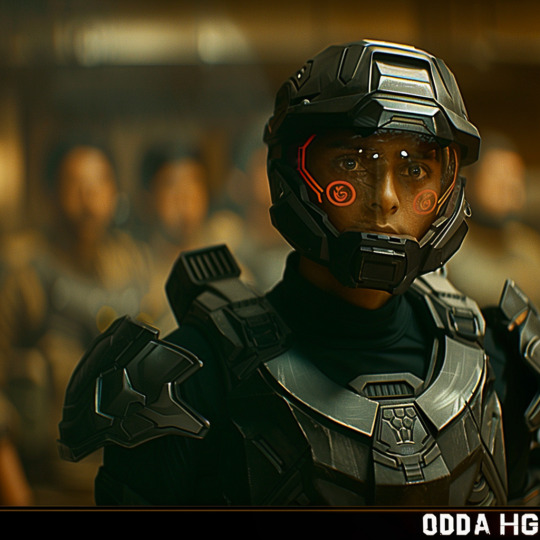
Visor System
Retractable Visor: The helmet features a retractable, polycarbonate visor that can be deployed or retracted with a simple voice command or manual switch. The visor is impact-resistant and provides full facial protection.
Heads-Up Display (HUD): When the visor is deployed, it functions as a transparent display, overlaying critical information directly onto the user's field of vision. The HUD includes data such as ID overlays of other cadets, navigation aids, environmental readings, and communication messages.

Communication
Integrated Communications Suite: The helmet is equipped with a built-in communication system, allowing for helmet-to-helmet communication among cadets and instructors. This includes individual, group, and broadcast modes.
External Noise Control: The helmet can either fully block outside noise or allow selective sounds, such as authorized speech, to pass through. This feature ensures clear communication while maintaining situational awareness.

Sensory Input Management
Noise Dampening: Blocks out external noise when necessary, with adjustable settings to allow selective auditory input.
Visual Filters: Can dim, block or enhance visual input based on the cadet’s environment, reducing sensory overload.
AI Monitoring: The helmet’s integrated AI monitors conversations, filtering out unauthorized or harmful communications and providing real-time feedback.
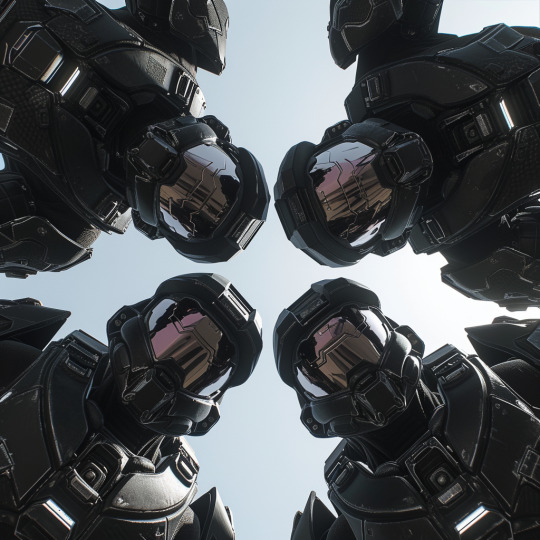
Sensors and Monitoring
Environmental Sensors: The helmet includes sensors to monitor external conditions such as temperature, humidity, and air quality, providing real-time data to the wearer and the command center.
Biometric Monitoring: The helmet continuously monitors vital signs, including heart rate, respiration, and stress levels, transmitting this data to the central monitoring system.

Safety and Security
Neck Seal: The helmet features an airtight neck seal that integrates with the body armor, ensuring a complete protective barrier against hazardous environments.

Additional Features
Night Vision and Thermal Imaging: The helmet is equipped with night vision and thermal imaging capabilities, allowing for enhanced visibility in low-light or obscured conditions.
Custom Fit: The padding and internal structure can be adjusted to fit various head sizes and shapes, ensuring a custom fit for each cadet.

Usage and Maintenance
Battery Life: The helmet's power supply is integrated with the suit's main power system, providing continuous operation for up to five days without recharging.
Maintenance: Regular maintenance includes cleaning the visor, checking the seals, and ensuring the communication systems are functioning properly. Maintenance protocols are outlined in the standard operating procedure manual.
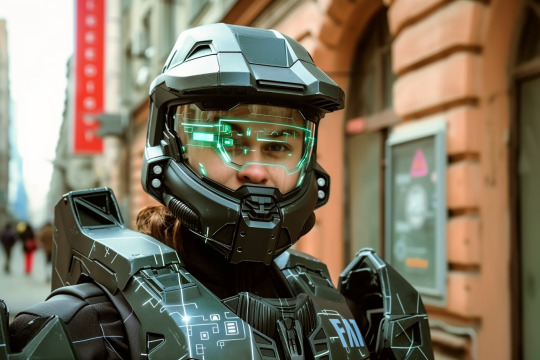
Remote Control and Safety Features
Instructor Control: Instructors can remotely control helmet functions, including visual and auditory inputs, to ensure cadet safety and compliance.
Emergency Lockdown: The helmet can immobilize the cadet’s head and control movements via the neural interface in critical situations.

Usage Parameters
Operational Duration: Designed for continuous use up to 7 days, with standard operational periods of 5 days.
Maintenance Cycle: Requires a maintenance check and recalibration after each operational cycle to ensure optimal performance.

6 notes
·
View notes
Text
By Seth J. Frantzman
IT’S IMPORTANT to look at the timing here to understand the likely Hamas calculations. In early March, reports indicated that Israel would be pressured into a ceasefire before Ramadan. That meant that the ceasefire was supposed to start around March 10. However, Hamas increased its demands and refused to provide a list of living hostages. Hamas believed that Israel would be pressured into a ceasefire without hostages being released. Israel did reduce operations in Gaza and redeploy some units, but the IDF also stepped up raids in Gaza. This included raids over the last few months in areas the IDF cleared back in November, among them a raid into Shati and then into Zaytun. However, the IDF also warned those in Zaytun about the raid before it happened.Hamas assumed they would get a warning if the IDF was returning to Shifa. They also assumed that the IDF was facing pressure after having raided Nasser Hospital in Khan Yunis. Hamas figured Israel wouldn’t go back to Shifa, and therefore, almost 1,000 terrorists appear to have congregated there. These large numbers of men congregating together would have been clearly visible. They would have seemed well fed, unlike the tens of thousands of others sheltering near the hospital. In some cases, these men would have been armed. They didn’t need to be armed all the time because arms were stored in various places. Hamas operates like a mafia, and mafia members don’t always need to be armed. The weapons are stored in easy-to-reach locations so members can get to them if necessary. Still, Hamas would have felt secure at Shifa, like returning to their homes, so they didn’t need weapons. They assumed the ceasefire would let them set up a command center there to resume control of northern Gaza, where an estimated 30,000 people are located.Hamas appears to sometimes operate in Gaza in plain clothes and without weapons, except when it needs weapons. For instance, Hamas gunmen have been involved in killing civilians who were trying to access aid. It appears Hamas is responsible for some of the incidents at the Kuwaiti roundabout near Gaza City. This means that Hamas arms its men when it needs to but often, the men seem to mill around without weapons. When the IDF raided Shifa, at least 180 terrorists were eliminated in gunfights. The terrorists also have mortars nearby.AdvertisementThe overall picture that emerges is that Hamas returned to Shifa because it believed a ceasefire would be announced in early March. When the ceasefire didn’t happen, it likely consulted with its leadership, which is based in Gaza and abroad. It likely heard from them that the West was pushing for the ceasefire and that Hamas should not worry too much; they would soon be reconstituted in northern Gaza.The surprise raid upset their plans. However, Hamas is still operating in the north and also in central Gaza and the south. For instance, it fired rockets at Ashdod on Monday from Deir al-Balah in central Gaza, the first rocket fire of this kind in two months.Hamas understands the timeline in Gaza. It can read Western media and watch debates at the UN and the news. It is waiting for a ceasefire. It knows it is hosted abroad by two Western allies and assumes that its hosts and patrons will help return the terror group to power in Gaza and help it come to power in the West Bank. For Hamas, places like Shifa are the natural nodes in their empire of terror in Gaza that they need to reconstitute to take power again.
14 notes
·
View notes